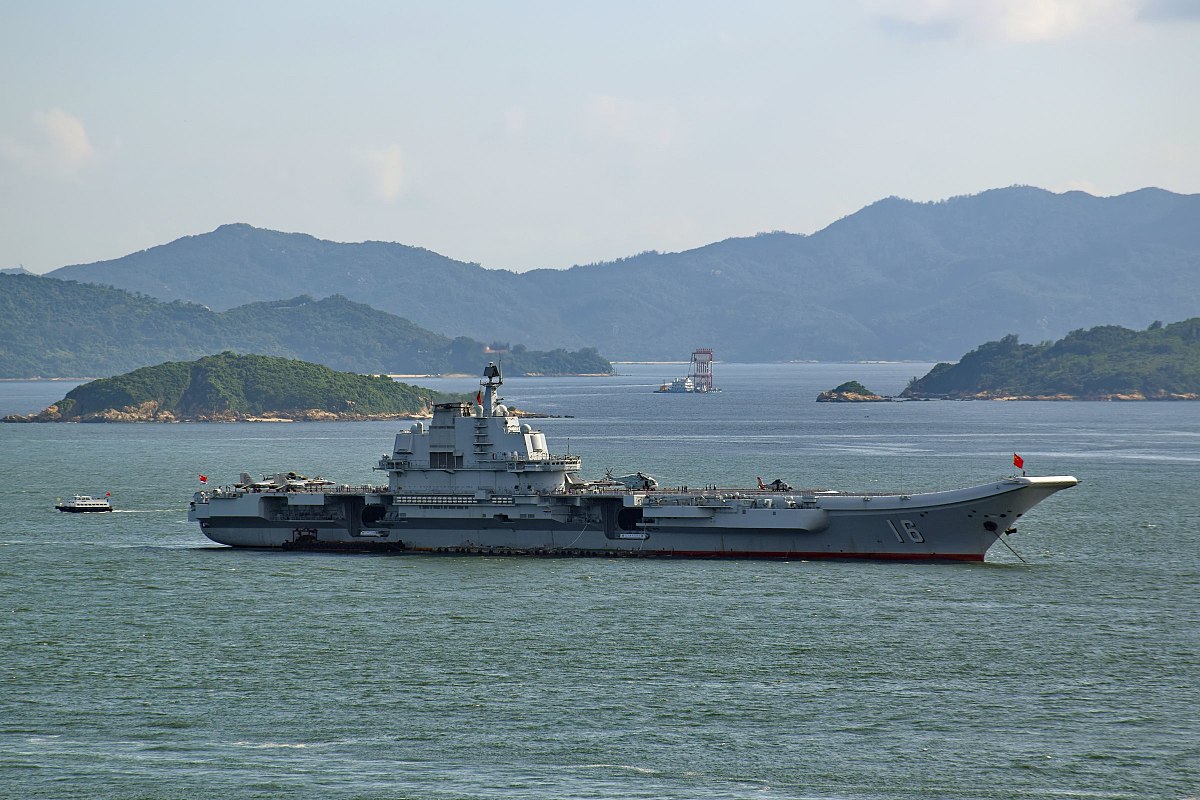Sanskrit names in Tver region
Context:
- Tver & Dwarka
- Delhi & Delki
- Mokshino
- Lama
- Shosha
- Navi
- Kashin
- Sit and Ravan
- Western Dvina
- Valdai
Tver is a Russian city located 180 km. northwest of Moscow. The Yamuga River flows near the border of the Moscow and Tver regions. India’s capitals New Delhi and Agra are located on the banks of the Yamuna River.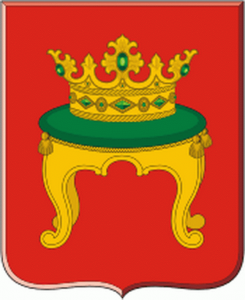
Tver was formerly the capital of a powerful medieval state. It was Moscow’s rival for the supremacy over the whole Russian lands. Tver is situated at the conflux of three rivers (the Volga River, the Tvertsa River, and the Tmaka River). The point of such confluence is a sacred place for Hindus. The most famous is Prayag.
Tver is often associated with dver and dwerka that are Russian words for door, gate, etc. In Sanskrit, door is dvara. Dwarka in Gujarat is one of the four sacred Hindu pilgrimage sites and one of the seven most ancient religious cities of India.
The first European who reached India was Tver citizen Afanasiy Nikitin. Broadly speaking, he was not the first Russian in India. From the 1st to 4th centuries AD Saka rulers played a prominent part in the history of the above mentioned Indian state Gujarat. The term Saka refers to the Scythians who lived on the Eurasian Steppe. The Scythians are among the best known ancestors of the modern Russians. Saka is a Sanskrit term. Modern-day Gujarat is derived from Sanskrit term Gurjaradesa (the Gurjar nation).
Edessa (Urfa) in the south-east of modern Turkey is claimed to be the hometown of Abraham, the common patriarch of Judaism, Christianity, and Islam. The adherents of these Abrahamic religions make up over 50% of the world’s population.
Odessa port and city were found by the Russians on the coast of the Black Sea in the 18th century during Russo-Turkish War. The history of that place goes back to the 1st millennium BC. It captured the attention of Alexander Suvorov (1730 — 1800), the fourth Generalissimo of the Russian Empire. His surname might have Sanskrit root. In Sanskrit, Suvar has several meaning including: ‘having beautiful water’, ‘the Sun’, ‘light’, ‘Heaven’, etc. Alexander Suvorov was born in Moscow that has many Sanskrit names around. See Sanskrit names in Moscow region. His family estate was in the neighboring Vladimir region that has a number of rivers and places whose names are translated from Sanskrit. For instance, rivers Agra, Tara, Yada, Ksara, Indrus, Suvorosch, etc. See Sanskrit names in Vladimir region.
It is suggested that Suvorov’s mother ancestors were of Armenian origin. The above mentioned Edessa (Urfa) is considered a holy place for the Armenians, since it is believed that the Armenian alphabet was invented there.
Dwarka (formerly known as Pappankalan) is a neighborhood of Indian Delhi. Interestingly, Delhi and Delki are the names of settlements in Tver region.
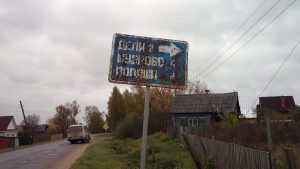 Village Delhi is located 40 km. northwest of Tver. Delhi is a part of the rural settlement Kava. The distance between Kava and Delhi is 2 km.
Village Delhi is located 40 km. northwest of Tver. Delhi is a part of the rural settlement Kava. The distance between Kava and Delhi is 2 km.
Settlement Kava is located on the banks of the Kava River that is a tributary of Tvertsa River (The Volga basin). See above about the conflux of three rivers in Tver city, including the Tvertsa River.
In Sanskrit, kava means provident. Also kavya means an oblation of food to deceased ancestors, a sacrificer, sacrificial priest. Kavya is equal to kavi, i.e. wise, gifted with insight, intelligent, knowing, enlightened, etc.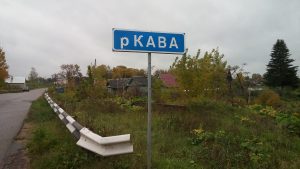
Kavya refers to the Sanskrit literary style used by Indian court poets. The father of Sanskrit drama, a philosopher and poet Asvaghosa (circa 80 — 150 AD) is attributed with first using the word. Indian epic poetry is traditionally called Kavya. The ancient Sanskrit epics the Ramayana and Mahabharata comprise together Mahakavya (“Great Compositions”), a canon of Hindu scripture.
Hindu baby name Kavya literally means intelligence, poetry, wisdom or prophetic inspiration. It also means endowed with the qualities of a sage, poet or descended from a sage.
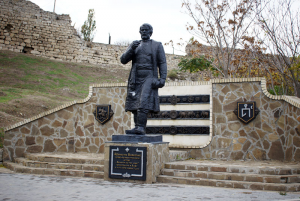 Kava is the ancient name of the modern Crimean city Feodosiya. Translated from the Greek language it means ‘the gift of the gods’. Feodosiya has a statue of the above mentioned Tver citizen Afanasy Nikitin who was the first European reached India and documented his visit. Afanasy Nikitin was in Feodosiya (Kava — Kaffa) on his way back from India to his native Tver (Russia).
Kava is the ancient name of the modern Crimean city Feodosiya. Translated from the Greek language it means ‘the gift of the gods’. Feodosiya has a statue of the above mentioned Tver citizen Afanasy Nikitin who was the first European reached India and documented his visit. Afanasy Nikitin was in Feodosiya (Kava — Kaffa) on his way back from India to his native Tver (Russia).
The most northern town of Tver region is Vesyogonsk. It has hotel called Deli and Deli Street.
Tver region has two old villages called Delki. These names are close to spoken name of the Indian capital city and its written form (Delhi).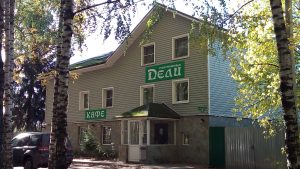
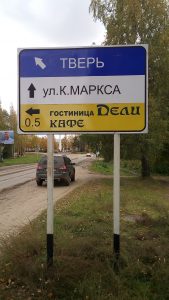 In XVI – XIX centuries Vesyogonsk was an important international trade center. It was known as Vesi Yogan. In Sanskrit, yogin is a person who practices yoga.
In XVI – XIX centuries Vesyogonsk was an important international trade center. It was known as Vesi Yogan. In Sanskrit, yogin is a person who practices yoga.
Shiva (Sanskrit: Siva) is often depicted as an omniscient Yogi who lives an ascetic life on Mount Kailash. See Russian river Siva. During the Kumbha Mela festivals, the Siva-linked ascetic warriors (Nagas) get the honor of starting the event by entering the Sangam first for bathing and prayers.
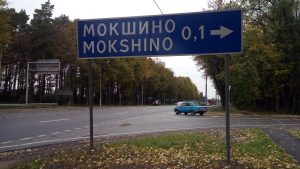 Moksha is often understood as spiritual liberation. Tver region has a number of villages that have the Sanskrit root ‘Moksha‘, including Mokshino. Moksha (Sanskrit: moksa) is a term in Hinduism and Hindu philosophy. It is present in other ancient religions born in India. It refers to freedom from the cycle of death and rebirth (saṃsara) as well as freedom from ignorance. See Russian rivers Moskva and Samara.
Moksha is often understood as spiritual liberation. Tver region has a number of villages that have the Sanskrit root ‘Moksha‘, including Mokshino. Moksha (Sanskrit: moksa) is a term in Hinduism and Hindu philosophy. It is present in other ancient religions born in India. It refers to freedom from the cycle of death and rebirth (saṃsara) as well as freedom from ignorance. See Russian rivers Moskva and Samara.
The Moksha Dwara (Door to Salvation) is the name of the main entrance (north entrance) of the Dwarkadhish temple in Dwarka. According to tradition, it has been built over Lord Krishna’s residential place. The south entrance is called Swarga Dwara (Gate to Heaven). Swarukha is a village in the Yaroslavl region neighboring to the Tver region. In the popular mythology of the Middle East, the Rukh (Ruk) is a legendary bird of prey. Rukmini is the principal wife and queen of Lord Krishna, the king of Dwaraka (see Section I).
The Rukh’s origins might be the same with the Indian bird Garuda (fighting serpent Naga) appeared in two Sanskrit epics, the Mahabharata and the Ramayana.
Mokshino is located on the crossroad of the federal highway M-10 and the road to the neighboring villages Varaksino and Shosha. Near Mokshino Lama River flows into Shosha River.
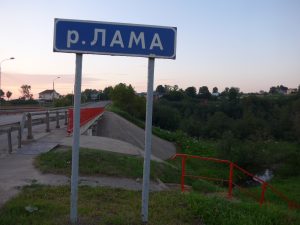 In Tibetan Buddhism, Lama is a title for a teacher of the Dharma. It is similar to the Sanskrit term guru. Lama River (~140 km.) starts in the Moscow region and flows into the Shosha River in the neighboring Tver region near its border with the Moscow region. The Lama’s source is ~90 km. from the center of Moscow.
In Tibetan Buddhism, Lama is a title for a teacher of the Dharma. It is similar to the Sanskrit term guru. Lama River (~140 km.) starts in the Moscow region and flows into the Shosha River in the neighboring Tver region near its border with the Moscow region. The Lama’s source is ~90 km. from the center of Moscow.
Second Lama River is in the north of Tver region. The source of that Lama River is 45 km. from the above mentioned town Vesyogonsk (having Delhi hotel and Delki street, see Section II).
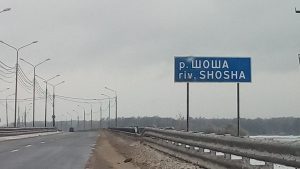 As it is said above, the Lama River is a tributary of the Shosha River. In Hinduism, Shesha (Sanskrit Sesa) is the nagaraja or king of all nagas and one of the primal beings of Creation. Spiritual nagas are known as true masters and teachers of human evolution. Lord Vishnu reclines on the celestial snake, the Shesha-naga.
As it is said above, the Lama River is a tributary of the Shosha River. In Hinduism, Shesha (Sanskrit Sesa) is the nagaraja or king of all nagas and one of the primal beings of Creation. Spiritual nagas are known as true masters and teachers of human evolution. Lord Vishnu reclines on the celestial snake, the Shesha-naga.
In Sanskrit, naga means cobra, i.e. serpent / reptile with a hood. Some Russian rivers have names Cobra and a number of towns / settlements derive their present names from the word ‘cobra’. As a matter of fact, cobras have never existed in those cold Russian places. The cobra’s living zone ends in the Central Asia. Cobra is a symbol of Kundalini that is the latent spiritual energy in the human body. Kundalini could give enlightenment and a range of supernormal powers. Nagas are also associated with waters — rivers, lakes, etc.
The rivers Lama and Shosha meet just 25 km. before the Shosha River enters the Volga River. At the confluence of the Shosha and the Volga there is village Shosha that is a part of rural settlement called Vahonino. The last two letters (‘no’) point only to the status of a settlement. The root is ‘Vahoni’. In Sanskrit, Vahana means ‘that which carries, that which pulls’. Hindu deities use vahana (animal or mythical entity) as a vehicle. This Vahonino is 2 km. from the village called Varaksino. The root is ‘varaksin’. In Sanskrit, varsin means ‘virgin’.
Next to Vahonino and Varaksino is the state residence of the President of the Russian Federation called «Rus«. In Sanskrit, rus means ‘passion’. Russian name of Russia is Rus and Rossiya. Hindi word Roshan means ‘light, bright’, etc. The Russians (and other the Slavic people) are often associated with such colours of hair and eyes. The self-name of the Slavs means glory. In Sanskrit, it is srava, in Russian – slava. The Sanskrit word ‘rasa’ (water, nectar) has exactly the same meaning in Russia.
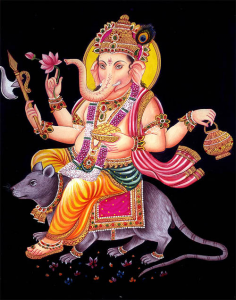 Beside Tver region, there are villages named Vahonino in other parts of Russia. For instance, village Vahonino in the Kotlas district of Arkhangelsk region. Moreover, in the Urdu (rooted in the Indo-Aryan language family, like Hindi), kolta means ‘citadel’. Kotla was the new capital of the Delhi Sultanatein under Sultan Feroz Shah Tughlaq in 14th century. Today it is a part of New Delhi. See above Russian Delhi and Delki. Also, Kotla is a village located in the Champawat district of Uttarakhand state (near the border with Nepal). The native languages of Kotla are Hindi and Sanskrit used by the majority of the village people.
Beside Tver region, there are villages named Vahonino in other parts of Russia. For instance, village Vahonino in the Kotlas district of Arkhangelsk region. Moreover, in the Urdu (rooted in the Indo-Aryan language family, like Hindi), kolta means ‘citadel’. Kotla was the new capital of the Delhi Sultanatein under Sultan Feroz Shah Tughlaq in 14th century. Today it is a part of New Delhi. See above Russian Delhi and Delki. Also, Kotla is a village located in the Champawat district of Uttarakhand state (near the border with Nepal). The native languages of Kotla are Hindi and Sanskrit used by the majority of the village people.
Another village Vahonino is a part of Myshkinsky District in Yaroslavl region. Myshkin is the administrative center of the district. Its name is derived from a mouse. It has the official tourist status as the town of a mouse. Indian deity Ganesha has a mouse as his vehicle, i.e. vahana. Ganesha is a son of Siva. See Russian river Siva that is a tribute of the Kama River (the Volga basin). The above mentioned town Myshkin is located the upper part of the Volga River whose source is in the Tver region.
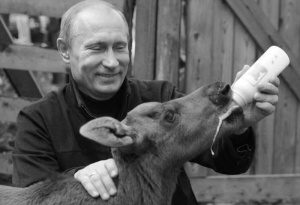 The ancestors of the Russian president Vladimir Putin come from the Tver region. Their village Pominovo is ~ 50 km. from the above mentioned Shosha, Vahonino, Varaksino and the Rus. In English, the Russian name Pominovo means remembrance. It is attributed to the ancestors who have passed away. In Russian, it is called pomin. In Sanskrit, panin means pain. Indeed, death of relatives is a pain. Russian surname Putin is related to the word ‘putnik‘ that is traveler, wayfarer. In Sanskrit, it is pathika. The Russian word ‘put‘ means way, road. In Sanskrit, it is patha and a religious center is peeth. In Sanskrit, put means virtue, whereas ‘puta‘ means ‘purifying‘, ‘who purifies’, etc.
The ancestors of the Russian president Vladimir Putin come from the Tver region. Their village Pominovo is ~ 50 km. from the above mentioned Shosha, Vahonino, Varaksino and the Rus. In English, the Russian name Pominovo means remembrance. It is attributed to the ancestors who have passed away. In Russian, it is called pomin. In Sanskrit, panin means pain. Indeed, death of relatives is a pain. Russian surname Putin is related to the word ‘putnik‘ that is traveler, wayfarer. In Sanskrit, it is pathika. The Russian word ‘put‘ means way, road. In Sanskrit, it is patha and a religious center is peeth. In Sanskrit, put means virtue, whereas ‘puta‘ means ‘purifying‘, ‘who purifies’, etc.
Russian name Vladimir means ‘one who rules the world’. It is similar to the meaning of Indian city Bhubaneswar (literally ‘Lord of the Earth’, a name of Siva). It is often referred to as a ‘Temple City of India’ due to the number of temples, particularly in the Kaḷinga architectural style. Many of them are associated with Vishnu, Surya and Siva. See Russian rivers Vishera, Sura and Siva.
Near Bhubaneswar is the site of the Kalinga War in which the Mauryan emperor Ashoka annexed and converted to Buddhism (3rd century BC). Bhubaneswar is one of the three modern India’s planned cities. The other two are Chandigarh and Gandhidham. Today, Bhubaneswar is the capital of the Indian state Odisha (formerly Orissa). The name Odisha correlates to the name of city Odessa established by the Russians on the Black Sea.
Bhubaneswar replaced Cuttack as the capital in 1949. Interestingly, Urali is a locality in Cuttack, whereas Ural is the Russian name of the Urals whose highest peak is associated with Indian sage Narada. See Narada and the Urals.
 Urali is also the name of a small railway station in Pune district, Indian state Maharashtra. In Peru, Puno is a port city at an altitude of over 3800 meters on the shores of Lake Titicaca in the Andes, the largest lake in South America. In 2000 (in the beginning of the Aquarian Age) an obelisk at Revdanda (120 km south of Mumbai, Maharashtra’s capital city) was erected to honor the above mentioned Tver citizen Afanasiy Nikitin who was the first European reached India.
Urali is also the name of a small railway station in Pune district, Indian state Maharashtra. In Peru, Puno is a port city at an altitude of over 3800 meters on the shores of Lake Titicaca in the Andes, the largest lake in South America. In 2000 (in the beginning of the Aquarian Age) an obelisk at Revdanda (120 km south of Mumbai, Maharashtra’s capital city) was erected to honor the above mentioned Tver citizen Afanasiy Nikitin who was the first European reached India.
Also, Urali language is related to Kannada, one of the major Dravidian languages of India. See settlement and the river Kanadei in Ulyanovsk region of Russia.
The foundation of Bhubaneswar as the new capital city of Odisha was laid by Prime Minister Jawaharlal Nehru in 1948. See Lake Neru in the Yaroslavl region.
Bhubaneswar is an emerging information technology (IT) hub. The It River in the Yaroslavl region has been known for centuries, i.e. much before the invention of IT.
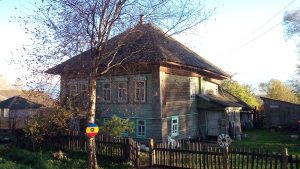 Navi is a village in the Tver region, located on the middle between the above mentioned town Vesyogonsk (having Delhi hotel and Delki street, see Section II) and the town Kashin (see below Section VII).
Navi is a village in the Tver region, located on the middle between the above mentioned town Vesyogonsk (having Delhi hotel and Delki street, see Section II) and the town Kashin (see below Section VII).
In Avatar (2009 film), the Navi are the native humanoid species that live on the planet Pandora,![]() resembling the Earth. Sanskrit word ‘avatara’ represents concept in Hinduism and other religions. It refers to the incarnation of a deity on Earth. In Hinduism, Kalki or Kalkin is an avatar of Lord Vishnu foretold to appear at the end of the current epoch called Kali Yuga. See settlement Kalikino near the town Veliky Ustyug that stands on the confluence of two rivers called Sukhona and Yug. The Sanskrit word ‘sukha’ means ‘delight, joy’, i.e. the synonyms of the new cosmic era that would come after Kali Yuga (the age of darkness). Veliky Ustyug is linked to the Aquarian and its coming era.
resembling the Earth. Sanskrit word ‘avatara’ represents concept in Hinduism and other religions. It refers to the incarnation of a deity on Earth. In Hinduism, Kalki or Kalkin is an avatar of Lord Vishnu foretold to appear at the end of the current epoch called Kali Yuga. See settlement Kalikino near the town Veliky Ustyug that stands on the confluence of two rivers called Sukhona and Yug. The Sanskrit word ‘sukha’ means ‘delight, joy’, i.e. the synonyms of the new cosmic era that would come after Kali Yuga (the age of darkness). Veliky Ustyug is linked to the Aquarian and its coming era.
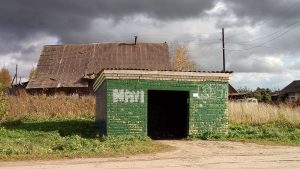 The very name Navi has several interesting meanings. If read from the right to the left, Navi becomes Ivan that is the most known Russian name in the world. Navi also refers to the prophet in the Hebrew Bible and is similar in meaning to the Arabic word ‘nabi’. In Hindi, navi means new. It correlates to the same Russian word. Navi is a part of the name of Scandinavia.
The very name Navi has several interesting meanings. If read from the right to the left, Navi becomes Ivan that is the most known Russian name in the world. Navi also refers to the prophet in the Hebrew Bible and is similar in meaning to the Arabic word ‘nabi’. In Hindi, navi means new. It correlates to the same Russian word. Navi is a part of the name of Scandinavia.
The above mentioned village Navi is located in the Krasnoholmsky (Krasny Holm) district. Translated from Russian to English, it is the Red Hill district. Indeed, it is an upland region in the north-west of central Russia. In the Middle Iranian languages, ‘hill’ is ‘dvin’. The very name ‘Iran’ derives directly from a Middle Persian word. Iran means ‘land of the Aryans or land of the honorable people’. In Sanskrit, ‘dvaina’ means ‘divine’. The river Dvina (Western Dvina, see Section IX) begins here, in the same Tver region. Its source is ~300 km. south-west from the Krasny Holm (i.e. dvin) and Navi.
Navi Mumbai is a planned township of Mumbai, the most populous city in India. It is located on the shore of the Arabian Sea. Tver citizen Afanasiy Nikitin was the first European who set his foot here in 15th century (see Section I).
It is said that India’s first Prime Minister Jawaharlal Nehru helped Russian leader Nikita Khrushchev to take decision to erect a monument of Afanasiy Nikitin in Tver on the bank of the Volga River that begins in the Tver region.

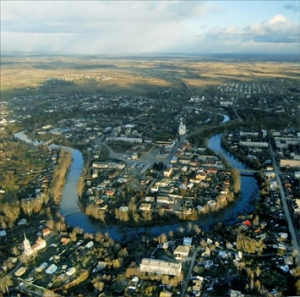 Kashin is one of the oldest towns of the Tver region. Also, Kashin is a village in Hamadan Province of Iran. Interestingly, in the same Hamadan Province there is town Mohajeran, whereas Mohenjo-daro is the world famous archaeological site in Pakistan (lit. ‘land of pure‘), one of the world’s earliest major cities. Mohajeran’s county is called Bahar, whereas Bihar is the Indian state, rightly called the history of India. The Ashoka chakra adorning the national flag of India is originated in Bihar. The first President of India was from Bihar. The name Bihar is derived from the Sanskrit word Vihara meaning ‘abode’.
Kashin is one of the oldest towns of the Tver region. Also, Kashin is a village in Hamadan Province of Iran. Interestingly, in the same Hamadan Province there is town Mohajeran, whereas Mohenjo-daro is the world famous archaeological site in Pakistan (lit. ‘land of pure‘), one of the world’s earliest major cities. Mohajeran’s county is called Bahar, whereas Bihar is the Indian state, rightly called the history of India. The Ashoka chakra adorning the national flag of India is originated in Bihar. The first President of India was from Bihar. The name Bihar is derived from the Sanskrit word Vihara meaning ‘abode’.
Briefly, Bihar has been the centre of power, learning, and culture in India for many centuries. It was the place of the most famous ancient kingdoms of India, mentioned in the Puranas, Ramayana and Mahabharata. Capital state of the Mauryan emperors made India’s first empire. This land gave the world’s first republic and the best ancient universities. Bihar is the birthplace of Jainism and Buddhism as well as the birthplace of Guru Gobind Singh, the last of the living Sikh Gurus. Gobind Sadan is Delhi based international community promoting world peace. This organization is rooted in the Sikh tradition and the universal teachings of its Gurus.
In Bihar Buddha attained Enlightenment and preached his last sermon before his death (5th century BC). Bihar’s ancient city Vaishali (north from the present state’s capital) is associated with the Buddha’s sacred bowl.
The Jal Mandir temple dedicated to founder of Jain religion and built on the place of his Nirvana, is in the shape of a Vimana. In the Sanskrit epics, Vimana is the ‘flying chariot’ employed by various gods and controlled by the mind.
Sage Vatsyayana is said to have written the world famous Kama Sutra while in Bihar. He is credited with creation of the legend of Tara as a tantric goddess. See Russian rivers Kama and Tara.
Kashi is the old name of Varanasi, regarded as one of seven holy Indian cities which can provide Moksha. See Russian river Moksha. It is the place of Buddha’s first sermon. Another giver of liberation is Indian city Dwarka that has the same name meaning with Tver (see Section I). In the Rig Veda, Kashi is known as the ‘City of Light’. According to legend, it was founded by the god Siva. See Russian river Siva. Kashi (Varanasi) is among the world’s oldest continuously inhabited cities.
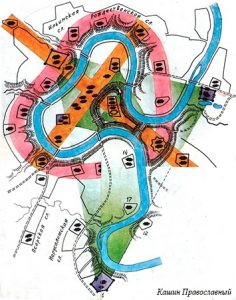 The architects, clergy, merchants of Russian town Kashin have used the Bible description of the Heavenly Jerusalem to implement it in their town. For instance, 17 temples placed on the longitudinal axis crossing the town and 16 temples on the transverse axis. Thus, their total number was 33 or the so-called age of Christ. The town’s main Resurrection Cathedral was surrounded by 24 temples to remind the Revelation of John the Divine where the Heavenly Throne is surrounded by 24 elders. In the 16th century there were 13 monasteries in Kashin, of which the three largest were on the three busiest roads. They were in the corners of a huge triangle, the tops of which were Trinity temples in each of these three monasteries. There was a symbolic union of three Trinity temples in a triangle that is a symbol of the Holy Trinity. In the external monastery triangle covering the entire town there was the internal monastery triangle, inside which was only a fortress, also triangular in shape. This is an ancient sign in the form of oppositely directed triangles, meaning the interaction of Spirit and Matter, evolutionary flows, etc.
The architects, clergy, merchants of Russian town Kashin have used the Bible description of the Heavenly Jerusalem to implement it in their town. For instance, 17 temples placed on the longitudinal axis crossing the town and 16 temples on the transverse axis. Thus, their total number was 33 or the so-called age of Christ. The town’s main Resurrection Cathedral was surrounded by 24 temples to remind the Revelation of John the Divine where the Heavenly Throne is surrounded by 24 elders. In the 16th century there were 13 monasteries in Kashin, of which the three largest were on the three busiest roads. They were in the corners of a huge triangle, the tops of which were Trinity temples in each of these three monasteries. There was a symbolic union of three Trinity temples in a triangle that is a symbol of the Holy Trinity. In the external monastery triangle covering the entire town there was the internal monastery triangle, inside which was only a fortress, also triangular in shape. This is an ancient sign in the form of oppositely directed triangles, meaning the interaction of Spirit and Matter, evolutionary flows, etc.
 A temple dedicated to the Entry of Jesus into Jerusalem stands at the entrance to Kashin from Moscow (i.e. Russia’s capital). It affirms the symbolic perception of Kashin.
A temple dedicated to the Entry of Jesus into Jerusalem stands at the entrance to Kashin from Moscow (i.e. Russia’s capital). It affirms the symbolic perception of Kashin.
Interestingly, the Hebrew word kasher means proper or lawful. Kashira is one of the oldest cities of the Moscow region located on the Oka River near the inflow of its tributary river Kashirka, whereas town Kashin in Tver region is located on the Kashinka River. All these rivers belong to the Volga basin.
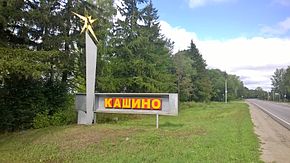 Kashino is the name of dozens settlements in the central and northern parts of Russia. The most famous among them is Kashino in Volokolamsk districts of the Moscow region. This Kashino is ~1 km. from the Lama River (see Section IV). In 1920 the first Russian rural power station was put into operation. It was built by the local peasants but the opening attended Lenin.
Kashino is the name of dozens settlements in the central and northern parts of Russia. The most famous among them is Kashino in Volokolamsk districts of the Moscow region. This Kashino is ~1 km. from the Lama River (see Section IV). In 1920 the first Russian rural power station was put into operation. It was built by the local peasants but the opening attended Lenin.
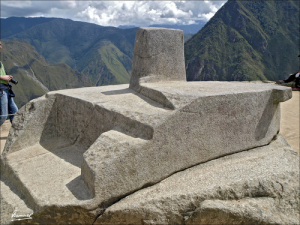
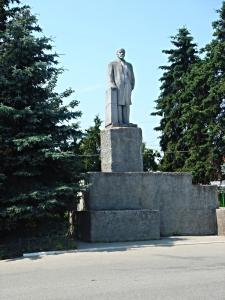 One of the most outstanding statues of this Communist movement’s leader has been erected in the above mentioned town Kashin. The base resembles the world famous Intihuatana in Machu Picchu (Peru). Literally, it means ‘the place when the Sun gets tied’. In Sanskrit, the Sun is Surya. See Russian river Sura. Intihuatana is located at the top of the sacred mountain. This religious construction is a wonder of the ancient technology of a highly developed civilization.
One of the most outstanding statues of this Communist movement’s leader has been erected in the above mentioned town Kashin. The base resembles the world famous Intihuatana in Machu Picchu (Peru). Literally, it means ‘the place when the Sun gets tied’. In Sanskrit, the Sun is Surya. See Russian river Sura. Intihuatana is located at the top of the sacred mountain. This religious construction is a wonder of the ancient technology of a highly developed civilization.
 The Koshi or Kosi River joins the Ganges in the above mentioned Indian state Bihar. Kosino is the name of several settlements in different regions of Russia. It includes the Tver region.
The Koshi or Kosi River joins the Ganges in the above mentioned Indian state Bihar. Kosino is the name of several settlements in different regions of Russia. It includes the Tver region.
Kosino is a part of Moscow, as well as New Kosino. The rising Sun is depicted on its flag and coat of arm to signify location of the area in the eastern part of Moscow.
Kosi Kalan is a town between present and former India’s capitals Delhi and Agra. Nearby to Kosi are the world famous pilgrim places Vrindavan and Mathura related to Lord Krishna.
The heavenly patron of Kashin is Anna Kashinskaya (1280 — 1368). She is the only Russian saint who was twice canonized. Her husband was Prince Michael of Tver (1271 – 1318) who is also among the saints of the Russian Orthodox Church. Anna was a daughter of Prince Dmitry of Rostov (1253 – 1294) who was also the prince of Ustyug.
During the Soviet period, the Tver region was named after Mikhail Kalinin born near the above mentioned town Kashin. He was the Head of state of the Soviet Union from 1919 to 1946. His surname Kalinin comes from Kalina that is Russian name of the snowball tree (Viburnum opulus). According to a legend kalina (little red berry) was associated with the birth of the Universe. Kalina bridge connects the worlds. Kalina is the title of the Russian song Kalinka that is one of the most famous folk songs in Russia and all over the world. Kalina is quite close to Kalika that is Sanskrit word meaning ‘bud’ or ‘unknown flower’. Also the One Who is the Goddess of Time.
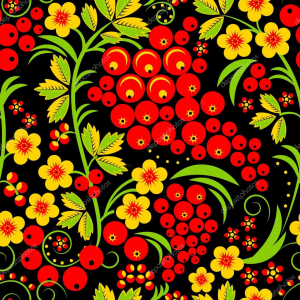 Mikhail Kalinin was born on 19 November 1875. On the same day but in 1917 was born Indira Gandhi, the 3rd Prime Minister of India and the daughter of India’s first Prime Minister, Jawaharlal Nehru. See Lake Neru in the Yaroslavl region of Russia. Moreover, she was born 12 days after the Socialist Revolution in Russia (7 November 1917).
Mikhail Kalinin was born on 19 November 1875. On the same day but in 1917 was born Indira Gandhi, the 3rd Prime Minister of India and the daughter of India’s first Prime Minister, Jawaharlal Nehru. See Lake Neru in the Yaroslavl region of Russia. Moreover, she was born 12 days after the Socialist Revolution in Russia (7 November 1917).
The Russian Revolution of 1917 abolished the tsarist autocracy of the Romanov dynasty. Generally speaking, their royal surname comes from the Christian saint Romanos the Melodist or the Hymnographer born in the 6th century in Damascus (Syria). On the other side, Raman is the Sanskrit word meaning ‘pleasant, charming’ and is another name for the love god Kama. Raman is a Hindu boy name with the same meaning. Raman Reti road leads from the Delhi-Agra national highway to Vrindavan, where Lord Krishna spent his childhood days. Interestingly, the deep root of Russian royal family’s surname Romanov (usually pronounced in Russian as Ramanovy) is the same as the ancient Sanskrit epic Ramayana. Its main characters are Rama, Sita, Ravana, etc.
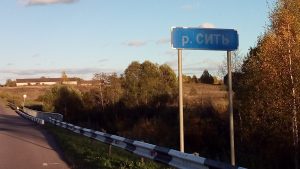
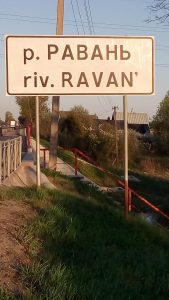 In the Tver region there is river named Sit. In the neighboring Novgorod region there is river Ravan. In the Hindu texts Ravana is considered to be the most revered devotee of Siva. See Russian river Siva. King Ravana was an Asura. See Osurovo in Yaroslavl region of Russia. His flying chariot Pushpaka Vimana is the most quoted example of a vimana (see above section VII). Initially, it was given to Ravana’s half-brother Kubera by the creator god Brahma. Ravana seized it, but after his death the flying chariot (vimana) was returned to Kubera by Rama.
In the Tver region there is river named Sit. In the neighboring Novgorod region there is river Ravan. In the Hindu texts Ravana is considered to be the most revered devotee of Siva. See Russian river Siva. King Ravana was an Asura. See Osurovo in Yaroslavl region of Russia. His flying chariot Pushpaka Vimana is the most quoted example of a vimana (see above section VII). Initially, it was given to Ravana’s half-brother Kubera by the creator god Brahma. Ravana seized it, but after his death the flying chariot (vimana) was returned to Kubera by Rama.
According to the Ramayana, Ravana abducted Sita. She was the wife of prince Rama and a princess of the above mentioned Bihar (see Section VII). Traditionally, the authorship of Ramayana is attributed to the sage Valmiki who also lived in ancient Bihar.
Interestingly, Rama is then name of a lake located less that 120 km. from the center of Moscow. The Rama Lake is very close to the shore of the river Oka. Nearby is the Lake Gati, whose name has many meanings in Sanskrit, including: happiness, way, method of acting, numerous forms of life, course of the soul, etc.
Rama is the main hero of the Ramayana epic and incarnation of the Lord Vishnu. Vishera River is the name of several rivers in Russia. One Vishera River (64 km.) is in the Novgorod region like the above mentioned river Ravan. Another Vishera River (415 km.) is tributary of the Kama River in Perm Krai (part of the Urals connected with Vedic sage Narada).
The mouth of Novgorod Vishera River is ~10 km. from the city of Veliky Novgorod also known as Novgorod the Great. Settlement Savino is located near the mouth. In Sanskrit, Sava means ‘sun, impulse, setting in motion, kind of sacrifice’, etc.
Veliky Novgorod is considered to be the cradle of the modern Russian statehood. The Rurik Dynasty was established here in the 9th century. The Rurikids are one of Europe’s oldest royal houses. They were the founders of the Tsardom of Russia and the ruling dynasty until 17th century when they were succeeded by the above mentioned Romanovs.
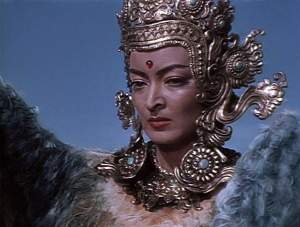 The most popular Veliky Novgorod’s folk hero is Sadko. His Russian name is close to Sanskrit words Sadaka and Sadhu. Their general meaning is spiritual. The Sadhu is considered as the person solely dedicated to achieving Mokṣa. In Sanskrit, ‘sadhu’ means ‘saint, noble, powerful’, etc. The term Sadhu appears in Rig Veda where it means ‘straight, right, leading straight to goal’. Indeed, Sadko travelled to India in search of the bird of happiness to bring it to his native Veliky Novgorod. Translated to Sanskrit, the name of this Russian city would sound as MahaNaviPur. See above about Navi in Russia (Section VI). Pur is the vital part of previous names of some Russian cities, including Archangelsk (Pur-Navolok) on the White Sea (the Arctic Ocean).
The most popular Veliky Novgorod’s folk hero is Sadko. His Russian name is close to Sanskrit words Sadaka and Sadhu. Their general meaning is spiritual. The Sadhu is considered as the person solely dedicated to achieving Mokṣa. In Sanskrit, ‘sadhu’ means ‘saint, noble, powerful’, etc. The term Sadhu appears in Rig Veda where it means ‘straight, right, leading straight to goal’. Indeed, Sadko travelled to India in search of the bird of happiness to bring it to his native Veliky Novgorod. Translated to Sanskrit, the name of this Russian city would sound as MahaNaviPur. See above about Navi in Russia (Section VI). Pur is the vital part of previous names of some Russian cities, including Archangelsk (Pur-Navolok) on the White Sea (the Arctic Ocean).
The links of Veliky Novgorod with India could be also found in the works of Russian painter and philosopher Nicholas Roerich. It is stated that Veliky Novgorod used to have the legendary Chintamani Stone that is sent by the Himalayan Brotherhood (the Shambala) to the chosen places and people to accelerate the spiritual evolution. As a matter of fact, at its peak during the 14th century Veliky Novgorod was one of Europe’s largest cities and the capital of the Novgorod Republic that was much bigger than Moscow Princedom. Veliky Novgorod was the only Russian city that was not devastated by the invaders from Mongolia. Their cavalry could not get through the forests. Thus, Veliky Novgorod preserved the best of Russian culture and craftsmen.
Veliky Novgorod lies along the Volkhov River just downstream from its outflow from Lake Ilmen. Ilmen is also the name of the Nature Reserve in the southern Urals that was created in 1920 by decree of Lenin. It is among the first reserves established by the Soviet government after the above mentioned revolution (see Section VII). A branch of this Ilmen Nature Reserve is Arkaim related to the early Aryan civilization as described in the Avesta and Vedas.
 Interestingly, on the same meridian with Arkaim is Allaki, the archaeological monument in the Middle Urals. Allaki is a bizarre shape complex of 14 granite rocks (stone tents) standing on a small hill. Moreover, Allaki is on the same parallel with Moscow. In Hinduism, Alaka is the splendid home of Kubera, the lord of wealth and half-brother of Ravana.
Interestingly, on the same meridian with Arkaim is Allaki, the archaeological monument in the Middle Urals. Allaki is a bizarre shape complex of 14 granite rocks (stone tents) standing on a small hill. Moreover, Allaki is on the same parallel with Moscow. In Hinduism, Alaka is the splendid home of Kubera, the lord of wealth and half-brother of Ravana.
In Egypt, Allaqi is the major dry river (250 km.) in the southeastern part of the Eastern Desert of Egypt, draining the area from the hills near the Red Sea to the valley of the Nile. In the ancient time, Wadi (dry river) Allaqi was the way to the gold mines. Its mouth in the Nile Valley was ~115 km. south of south of Aswan on the eastern side of Lake Nasser. At this point used to be the now flooded by the lake settlement named Kuban. In Russia, Kuban is the name of a river in the Northwest Caucasus region in Krasnodar Krai. The Kuban River originates on the slopes of Mount Elbrus that is the highest mountain in Russia and in Europe, and the tenth most prominent peak in the world.
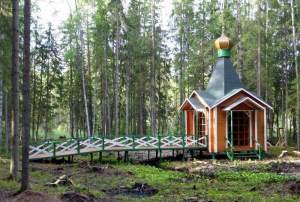 The origin of Western Dvina River (1020 km.) is in the Tver region, on the Valday Hills that cover significant part of the Tver region and are the source of largest European rivers. See below Section X. In Sanskrit, ‘dvaina‘ means ‘divine‘. In the Middle Iranian languages, ‘dvin’ is ‘hill‘.
The origin of Western Dvina River (1020 km.) is in the Tver region, on the Valday Hills that cover significant part of the Tver region and are the source of largest European rivers. See below Section X. In Sanskrit, ‘dvaina‘ means ‘divine‘. In the Middle Iranian languages, ‘dvin’ is ‘hill‘.
The mouth of the Western Dvina River is the Baltic Sea. At this point stands city Riga. There might be a distant connection or common root of the names Riga and Rig Veda. At least, the name of this ancient Indian collection of Vedic Sanskrit hymns is easily understood in Russian.
Among the main tributaries of the Western Dvina are smaller rivers whose names also could be translated from Sanskrit. For instance, the Disna River (~180 km.). In Sanskrit, ‘desna’ means ‘gift’, ‘giving’. Moreover, Desna is the name of several Russian rivers. The name of Drissa River is close to name of Indian state Orissa (Odisha), whose capital city is Bhubaneswar (see Section V). The name of Perse River (~ 50 km.) is comparable to the Russian Persei (or eng. Perseus), son of the god Zeus. Persei was the greatest Greek hero and slayer of monsters. Persia is the Greek name of Iran. There is a version that this name comes from Pers who was a son of Persei. Persian people are an Iranian ethnic group. They make up over half the population of Iran. The ancient Persians entered modern-day Iran by the first millennium BC. Their homeland apparently was Eurasia and the Russian steppes. They established and ruled some of the world’s most powerful empires. The Persians had massive cultural, political, and social influence on the territory and population of the ancient world.
X. Valdai (the sacred Hara and Meru)
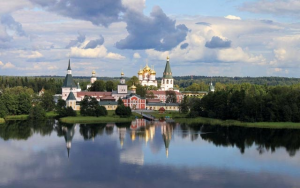 The Valdai is the name of a lake and an upland region in the north-west of central Russia, about midway between Saint Petersburg and Moscow. Broadly speaking, Valdai is a part of the bigger geological structure that extends to the Urals whose highest peak is linked with Vedic sage Narada.
The Valdai is the name of a lake and an upland region in the north-west of central Russia, about midway between Saint Petersburg and Moscow. Broadly speaking, Valdai is a part of the bigger geological structure that extends to the Urals whose highest peak is linked with Vedic sage Narada.
The Valdai is a place of many lakes and the origin of the largest European rivers: the Volga (~3700 km.), the Dnieper (2 145 km.), the Desna (1130 km.), the Western Dvina (1020 km.), etc.
The Valdai Hills (>600 km.) is the natural watershed of three seas: the Caspian Sea (the Volga), the Black Sea (the Dnieper) and the Baltic Sea (the Western Dvina, etc.). This ridge stretches in the latitudinal direction ‘from sunset to sunrise’, i.e. ‘from west to east’. It is important. Interestingly, the Avesta and the Rig Veda as well as ancient historians constantly repeated that the sacred Hara, Meru and the Riphean mountains stretched from west to east.
There is village called Berezai on the way from Tver to Valdai. According to the Avesta (the primary collection of religious texts of Zoroastrianism), Hara Berezaiti is the legendary mountain around which the stars and planets revolve. In Avestan cosmogony, Hara Berezaiti (literally meaning “High Watchpost”) is the geographic center of the universe, immediately surrounded by the steppes of the homeland of the early Iranians.
Adjacent settlements with Russified names Harino and Berezovo still exist near the highest point of the Northern Ridge (Severnye Uvaly), which forms a common geological structure with Valdai, stretching to the Urals, whose highest point is the mount related to Narada. Compare them to Hara Berezaiti from the Avesta. The special peaks of Hara Berezaiti are called tara. Tara and nearby Agra are the river in Vladimir region of Russia that has ancient links with India or vice verse.
The Valdai Hills were the southern border of the Last glacial period ended ~10 000 years ago. In Russia this Last glacial period is called Valdai glacial period. The height of the glacier was several kilometers. So there is ground for comparing the Valdai Hills covered by the high glacier with the north located sacred mountains of Hara and Meru described in the Avesta and the Rig Veda. It is well known fact that the early Iranians and the Indians (i.e. the so called Arias) came from the north. Geographically speaking, the Valdai Hills (and Russia as a whole) is the north to Iranian plateau and Indian subcontinent.
Appendix 1
Sangama is the Sanskrit word for confluence. Prayaga is a sacred pilgrimage site within India at the confluence of rivers Ganges and Yamuna. See Russian river Yamuga in Moscow region.
 The world famous Triveni Sangam in Prayag (Allahabad) is a confluence of three rivers (the Ganga, Yamuna, and the mythological Saraswati River). A bath here is said to flush away all of one’s sins and free one from the cycle of rebirth. It is an idea of Moksha (Sanskrit: Moksa). See the river Moskva and the river Sara. Prayag the site for historic Kumbh Mela. This festival and assembly is held here every twelve years. Kumbh mela is the world’s largest human congregation and most massive act of faith.
The world famous Triveni Sangam in Prayag (Allahabad) is a confluence of three rivers (the Ganga, Yamuna, and the mythological Saraswati River). A bath here is said to flush away all of one’s sins and free one from the cycle of rebirth. It is an idea of Moksha (Sanskrit: Moksa). See the river Moskva and the river Sara. Prayag the site for historic Kumbh Mela. This festival and assembly is held here every twelve years. Kumbh mela is the world’s largest human congregation and most massive act of faith.
Translated from Sanskrit, Kumbh Mela literally means ‘pitcher festival’, where kumbh is ‘pitcher’ and mela is ‘assembly’. The astrological sign Kumbha is Aquarius. It is the astrological sign of Russia and the new cosmic epoch for the next 2000 years. Russian president Vladimir Putin took the power in the end of the Age of Pisces the dawning of the Age of Aquarius (1999). Putin’s ancestors are from Tver region (see above Pominovo).
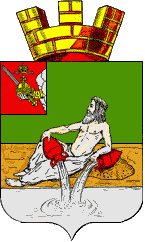 Aquarius is the symbol of Russian town Veliky Ustyug that is located on the confluence of the Sukhona and the Yug rivers. Downstream from this confluence the rivers form a single waterway known as the Northern Dvina. The names of these rivers have Sanskrit root.
Aquarius is the symbol of Russian town Veliky Ustyug that is located on the confluence of the Sukhona and the Yug rivers. Downstream from this confluence the rivers form a single waterway known as the Northern Dvina. The names of these rivers have Sanskrit root.
Traditionally, at the beginning of the Kumbh Mela the ritual bathing is opened by the Nagas. They are a group of Shaivite saints residing in Himalayan caves who come to visit civilized society only during the Kumbh Mela. They revere Shiva (Sanskrit: Siva) as the Supreme Being. See the Urals’ river Siva.
The origin of the festival can be found in the ancient legend about the battle between the demigods Devas and demons Asuras for amrita, elixir of immortality. See Osurovo in Yaroslavl region.
Allahabad is home place of Indira Gandhi and her father Jawaharlal Nehru, the first Prime Minister of India. He comes from a Kashmiri Pandit family. Kashmir is the northernmost geographical region of the Indian subcontinent. It is believed that Kashmir got its name from great sage Kashyapa. In Sanskrit, Kashyapa means ‘turtle’.
The name Kashmir may be a shortened form of ‘Kashyapa Mir‘. In this case it is easily understood in Russian. Mir is the Russian word for the world and the Universe. Pamir is known as the ‘Roof of the World’. It is located to the north of the Himalayas. During the Soviet era Pamir’s highest peaks were named after Communism and Lenin. Basically, the idea of Communism is the complete equality between the people and a fair world community. It was indeed symbolic for the ‘Roof of the World’.
Interestingly, but the first Muslim ruler of Kashmir had name Shah Mir. His ancestors were Kshatriya, who converted to Islam. Shah Mir was from Swat (modern Pakistan). The name Swat is derived from an old Sanskrit term, Suvastu, which means crystal clear water. It is mentioned in Rig Veda as the Suvastu River. It was shortened to Swat with the passage of time. Swat is close to the Russian word svet that has similar meaning as the above mentioned mir.
Август 8, 2017 English, Древние цивилизации, Другие города, Индия ДАЛЕЕ >

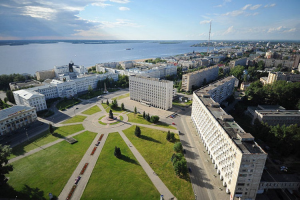
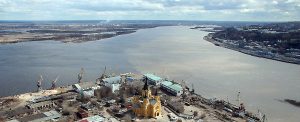 The Oka (right) is a major tributary of the Volga (left). In Sanskrit, oka means ‘conjunction of heavenly bodies’.
The Oka (right) is a major tributary of the Volga (left). In Sanskrit, oka means ‘conjunction of heavenly bodies’.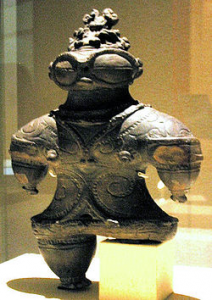 Kuril Islands are a part of Russia’s Sakhalin region. They separate the Sea of Okhotsk from the Pacific Ocean. It is believe that name Kuril originates from the islands’ original inhabitants word ‘kur’, meaning ‘man’.
Kuril Islands are a part of Russia’s Sakhalin region. They separate the Sea of Okhotsk from the Pacific Ocean. It is believe that name Kuril originates from the islands’ original inhabitants word ‘kur’, meaning ‘man’.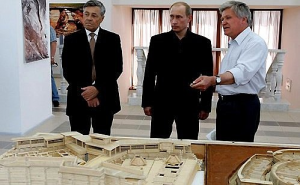
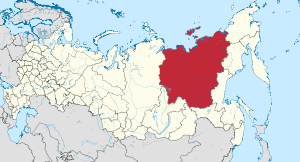 The Saha is the largest subnational governing body by area in the world (over 3 mln. km2). The Saha’s population is ~1 million. In comparison, India is over 3,2 mln. km2 for over 1,3 billion people. Approximately 99% of all Russian diamonds are mined here in Saha (Yakutia). Currently, Russia is the largest producer of the diamonds in the world (~ 1/3 of the market). Indian KGK Diamonds works in Saha.
The Saha is the largest subnational governing body by area in the world (over 3 mln. km2). The Saha’s population is ~1 million. In comparison, India is over 3,2 mln. km2 for over 1,3 billion people. Approximately 99% of all Russian diamonds are mined here in Saha (Yakutia). Currently, Russia is the largest producer of the diamonds in the world (~ 1/3 of the market). Indian KGK Diamonds works in Saha.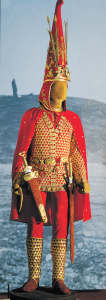 The Saka was the term used in Persian and Sanskrit sources for the
The Saka was the term used in Persian and Sanskrit sources for the 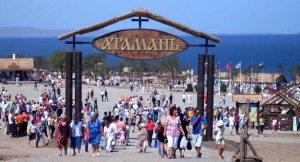 Village Atman is few kilometers west from Simferopol, the administrative centre of the Crimea. The name comes from the Greek Sympheropolis meaning ‘city of common good’. In the past Simferopol was known by other Greek name — The Scythian Neapolis. It was the ancient capital of the Crimean Scythians who lived on the territory from the 3rd century BC to the 4th century AD. They were the relatives of the co called Indo-Scythians or just Scythians (Saka), who migrated from Central Asia to India from the middle of the 2nd century BC to the 4th century AD.
Village Atman is few kilometers west from Simferopol, the administrative centre of the Crimea. The name comes from the Greek Sympheropolis meaning ‘city of common good’. In the past Simferopol was known by other Greek name — The Scythian Neapolis. It was the ancient capital of the Crimean Scythians who lived on the territory from the 3rd century BC to the 4th century AD. They were the relatives of the co called Indo-Scythians or just Scythians (Saka), who migrated from Central Asia to India from the middle of the 2nd century BC to the 4th century AD.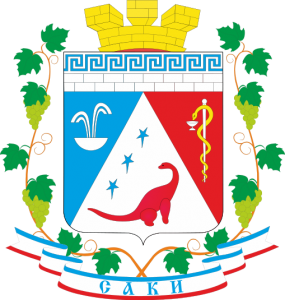 The ancestors of the Indo-Scythians are thought to be Saka (Scythian) tribes.
The ancestors of the Indo-Scythians are thought to be Saka (Scythian) tribes.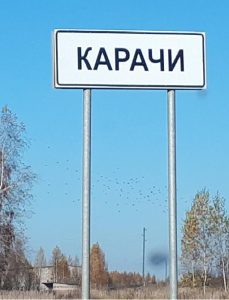 River to start a community. Indrus is the name of river in Vladimir region of Russia. In Russian, Kolachi means wheat breads in the form of a lock and with a handle. Moreover, settlement Karachi exists in
River to start a community. Indrus is the name of river in Vladimir region of Russia. In Russian, Kolachi means wheat breads in the form of a lock and with a handle. Moreover, settlement Karachi exists in 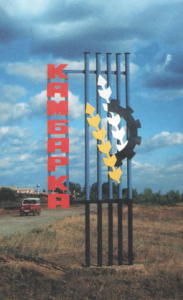
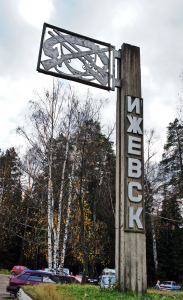
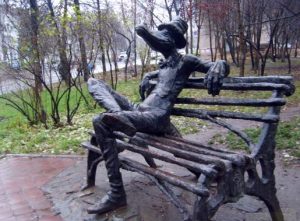 Izhevsk has a charming monument of crocodile, although crocodiles are not local species. There are different versions of the reasons. Some state that the origin of the monuments is the nickname for the Izhevsk factory gunsmiths — ‘Izhevsk crocodiles’. They were given green caftans for special achievements. Like Karachi, Izhevsk was found in 18th century. A legend about foundation of Karachi says that it was named in honour of a fisher woman, whose son is said to have slayed a man-eating crocodile.
Izhevsk has a charming monument of crocodile, although crocodiles are not local species. There are different versions of the reasons. Some state that the origin of the monuments is the nickname for the Izhevsk factory gunsmiths — ‘Izhevsk crocodiles’. They were given green caftans for special achievements. Like Karachi, Izhevsk was found in 18th century. A legend about foundation of Karachi says that it was named in honour of a fisher woman, whose son is said to have slayed a man-eating crocodile.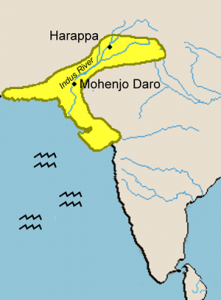
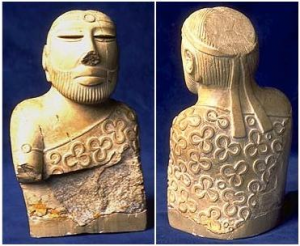 Interesting enough is the soapstone figure of a man found in Mohenjo-daro. The three circle motif on his cloak resembles the seal of Shambala.
Interesting enough is the soapstone figure of a man found in Mohenjo-daro. The three circle motif on his cloak resembles the seal of Shambala.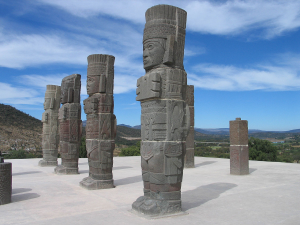 Tula is a world known Mesoamerican archeological site northwest of Mexico City. It was the capital of the Toltec Empire and important regional center. A legendary ruler of Tula was Quetzalcoatl. Its pyramid topped by four rather ancient astronauts is the main attraction of Tula. It fell in the middle of 12th century, but had significant influence in the following Aztec empire. When the Spanish arrived the feathered serpent god Quetzalcoatl linked to Tula was worshiped throughout Central America.
Tula is a world known Mesoamerican archeological site northwest of Mexico City. It was the capital of the Toltec Empire and important regional center. A legendary ruler of Tula was Quetzalcoatl. Its pyramid topped by four rather ancient astronauts is the main attraction of Tula. It fell in the middle of 12th century, but had significant influence in the following Aztec empire. When the Spanish arrived the feathered serpent god Quetzalcoatl linked to Tula was worshiped throughout Central America.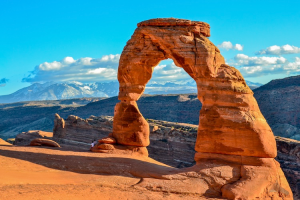 Among the main attractions of Utah is the world unique Arches National Park. Arka is synonyms of Sun god Surya and is a part of the name Dwarka whose literal meaning is ‘gateway to heaven’. See Section I.
Among the main attractions of Utah is the world unique Arches National Park. Arka is synonyms of Sun god Surya and is a part of the name Dwarka whose literal meaning is ‘gateway to heaven’. See Section I.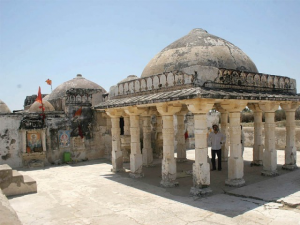 The temple was built in 14th century by a wealthy merchant who had been instructed in his dream by an angel. The Gori temple was dedicated to Lord Parshwanath, the 23rd Jain prophet who preached around the 8th century BC. At least a dozen major Indian Jain temples trace their heritage to Pakistan’s Gori temple. Jainism is one of the oldest religions and Parshwanath is among those who attract the most devotional worship of the Jains. He is credited with starting the tradition of ‘four fold restraints’ for monks – don’t kill, don’t steal, don’t lie and don’t own property.
The temple was built in 14th century by a wealthy merchant who had been instructed in his dream by an angel. The Gori temple was dedicated to Lord Parshwanath, the 23rd Jain prophet who preached around the 8th century BC. At least a dozen major Indian Jain temples trace their heritage to Pakistan’s Gori temple. Jainism is one of the oldest religions and Parshwanath is among those who attract the most devotional worship of the Jains. He is credited with starting the tradition of ‘four fold restraints’ for monks – don’t kill, don’t steal, don’t lie and don’t own property.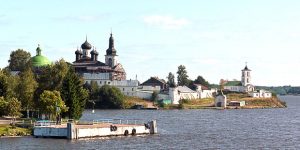 Goritsy female monastery is located near the Sanskrit named
Goritsy female monastery is located near the Sanskrit named 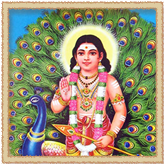
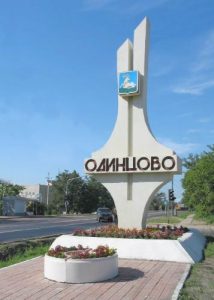 The
The 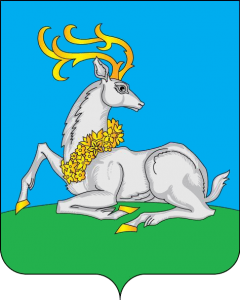 deer, representing cleanliness and purity. The deer lies facing the west, although gazes to the east. It is the destiny of Russia to harmoniously unite the East (The Spirit) and the West (The Matter).
deer, representing cleanliness and purity. The deer lies facing the west, although gazes to the east. It is the destiny of Russia to harmoniously unite the East (The Spirit) and the West (The Matter).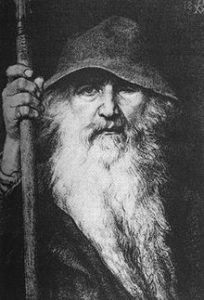 In Germanic mythology, Odin is a widely respected god. He is associated with healing, knowledge, battle, sorcery, poetry, the runic alphabet, etc. In order to gain wisdom, Odin sacrificed one of his eyes at the spring of Mimir which was the source of all knowledge. See Kashmir. This aligns with the ancient Egyptian mythos about the Eye of Horus and the Eye of Ra. The All-Seeing Eye is one of the oldest depictions of the Deity.
In Germanic mythology, Odin is a widely respected god. He is associated with healing, knowledge, battle, sorcery, poetry, the runic alphabet, etc. In order to gain wisdom, Odin sacrificed one of his eyes at the spring of Mimir which was the source of all knowledge. See Kashmir. This aligns with the ancient Egyptian mythos about the Eye of Horus and the Eye of Ra. The All-Seeing Eye is one of the oldest depictions of the Deity.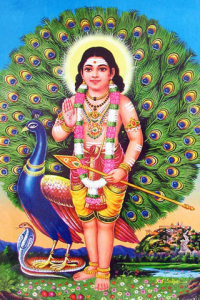 the Pleiadian Head Master, is the one leads towards Brahman, the Highest God. Sanat Kumara is one of the Four Kumaras who are the first mind-born creations and sons of the creator-god Brahma. In the Theosophical publications Sanat Kumara is an Ascended Master of Light.
the Pleiadian Head Master, is the one leads towards Brahman, the Highest God. Sanat Kumara is one of the Four Kumaras who are the first mind-born creations and sons of the creator-god Brahma. In the Theosophical publications Sanat Kumara is an Ascended Master of Light.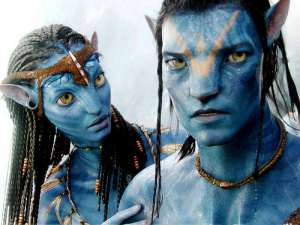 When looked from such angle, Scandinavia = Skanda + Navi.
When looked from such angle, Scandinavia = Skanda + Navi.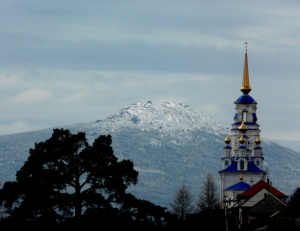 Urals and the South African iron-ore company. Kumba Iron Ore is the fourth largest iron-ore producer in the world and the largest in Africa. Major Russian iron ore and metallurgical companies are based in the Urals having the rich natural deposits.
Urals and the South African iron-ore company. Kumba Iron Ore is the fourth largest iron-ore producer in the world and the largest in Africa. Major Russian iron ore and metallurgical companies are based in the Urals having the rich natural deposits.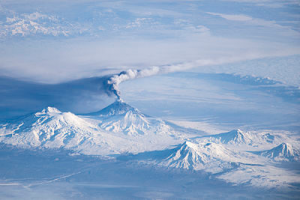
 The first documented settlers (XII century) of Veliky Ustyug were the citizens of
The first documented settlers (XII century) of Veliky Ustyug were the citizens of 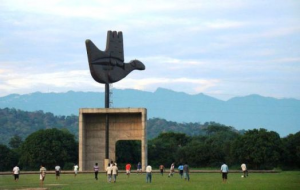 A recurring motif in Le Corbusier’s architecture was The Open Hand. It is a sign of peace and reconciliation. It is open to give and open to receive. The largest of the many Open Hand sculptures that Le Corbusier created is in Chandigarh (26 meter high). Upon the architect’s death in 1965, United States President Lyndon Johnson said, «His influence was universal and his works are invested with a permanent quality possessed by those of very few artists in our history». The Soviet Union added, «Modern architecture has lost its greatest master».
A recurring motif in Le Corbusier’s architecture was The Open Hand. It is a sign of peace and reconciliation. It is open to give and open to receive. The largest of the many Open Hand sculptures that Le Corbusier created is in Chandigarh (26 meter high). Upon the architect’s death in 1965, United States President Lyndon Johnson said, «His influence was universal and his works are invested with a permanent quality possessed by those of very few artists in our history». The Soviet Union added, «Modern architecture has lost its greatest master».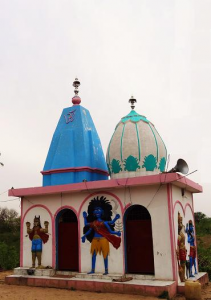 Chandigarh’s name is liked with the goddess Chandi. She is said to be one of the most spectacular of all personifications of Cosmic energy.
Chandigarh’s name is liked with the goddess Chandi. She is said to be one of the most spectacular of all personifications of Cosmic energy.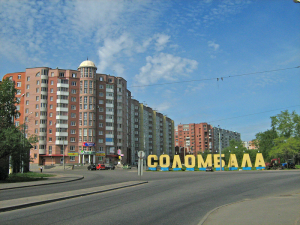

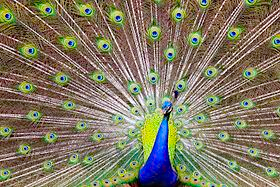 Ashoka was a grandson of Chandragupta Maurya (340 — 298 BC) who was the founder of the Maurya Dynasty. Mayura is peacock in Sanskrit. It is the national bird of India and symbol of Russian city
Ashoka was a grandson of Chandragupta Maurya (340 — 298 BC) who was the founder of the Maurya Dynasty. Mayura is peacock in Sanskrit. It is the national bird of India and symbol of Russian city  It is presumed that the Kalinga War was fought in the area of Dhauli hills located ~8 km. south of Bhubaneswar. A white peace pagoda was built on the top of the hill in the 1970s. At the same a monument of Lenin was erected in Russian historical town Aleksandrov that was the capital of the country in the 16th century under the rule of the above mentioned Ivan the Terrible. Aleksandrov is ~100 km. north-east of Moscow. Today, Aleksandrov is a part of Vladimir region that has ancient ties with India. There are certain resembles between the hand gestures of Lenin in Aleksandrov (right) and Buddha in the Dhauli peace pagoda (left). Equally, the basic ideas of Communism (world community) and Buddhism have much in common. It is known that The Masters of the Ancient Wisdom have named Lenin as a
It is presumed that the Kalinga War was fought in the area of Dhauli hills located ~8 km. south of Bhubaneswar. A white peace pagoda was built on the top of the hill in the 1970s. At the same a monument of Lenin was erected in Russian historical town Aleksandrov that was the capital of the country in the 16th century under the rule of the above mentioned Ivan the Terrible. Aleksandrov is ~100 km. north-east of Moscow. Today, Aleksandrov is a part of Vladimir region that has ancient ties with India. There are certain resembles between the hand gestures of Lenin in Aleksandrov (right) and Buddha in the Dhauli peace pagoda (left). Equally, the basic ideas of Communism (world community) and Buddhism have much in common. It is known that The Masters of the Ancient Wisdom have named Lenin as a 
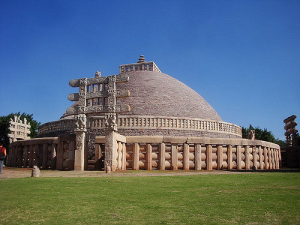 The famous Great Stupa in Sanchi was originally commissioned by Ashoka in the 3rd century BC. Today, it is one of the oldest stone structures in India. Sanchi is significant for Buddhist around the world. The stupa is located ~200 km east of Ujjain.
The famous Great Stupa in Sanchi was originally commissioned by Ashoka in the 3rd century BC. Today, it is one of the oldest stone structures in India. Sanchi is significant for Buddhist around the world. The stupa is located ~200 km east of Ujjain.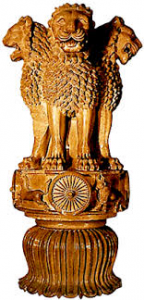 Ashoka pillar capital of Sarnath has become the State Emblem of India. Sarnath is located north-east of Varanasi (ancient
Ashoka pillar capital of Sarnath has become the State Emblem of India. Sarnath is located north-east of Varanasi (ancient 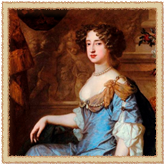
 Ашкелон относится к древнейшим городам на нашей планете. Его возраст – около 5
Ашкелон относится к древнейшим городам на нашей планете. Его возраст – около 5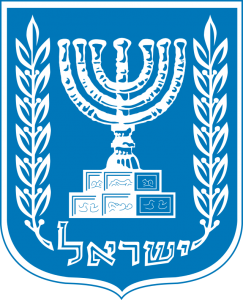
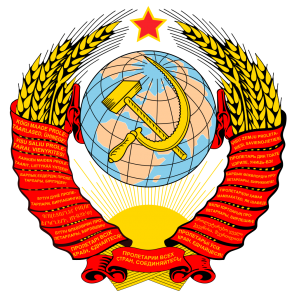 Примечательно, что Рим /
Примечательно, что Рим / 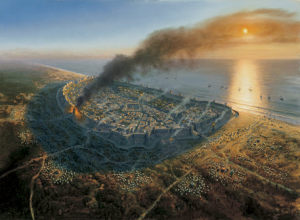 в
в 

 Сердце. Именно Бейбарс стал тем, кто окончательно разрушил древний Ашкелон, остававшийся одной из последних цитаделей крестоносцев на Святой Земле. Город был стерт с лица земли, а его территория на
Сердце. Именно Бейбарс стал тем, кто окончательно разрушил древний Ашкелон, остававшийся одной из последних цитаделей крестоносцев на Святой Земле. Город был стерт с лица земли, а его территория на 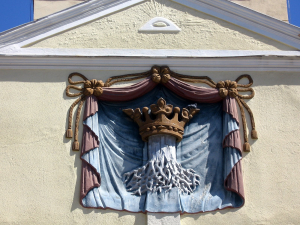 Семерка – это самое распространенное (наряду с тройкой) и одно из самых сакральных чисел во многих религиях и культурах. Оно выражает союз
Семерка – это самое распространенное (наряду с тройкой) и одно из самых сакральных чисел во многих религиях и культурах. Оно выражает союз 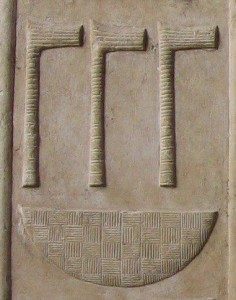 В Древнем Египте это был символ богов, т.е. нетеру (
В Древнем Египте это был символ богов, т.е. нетеру (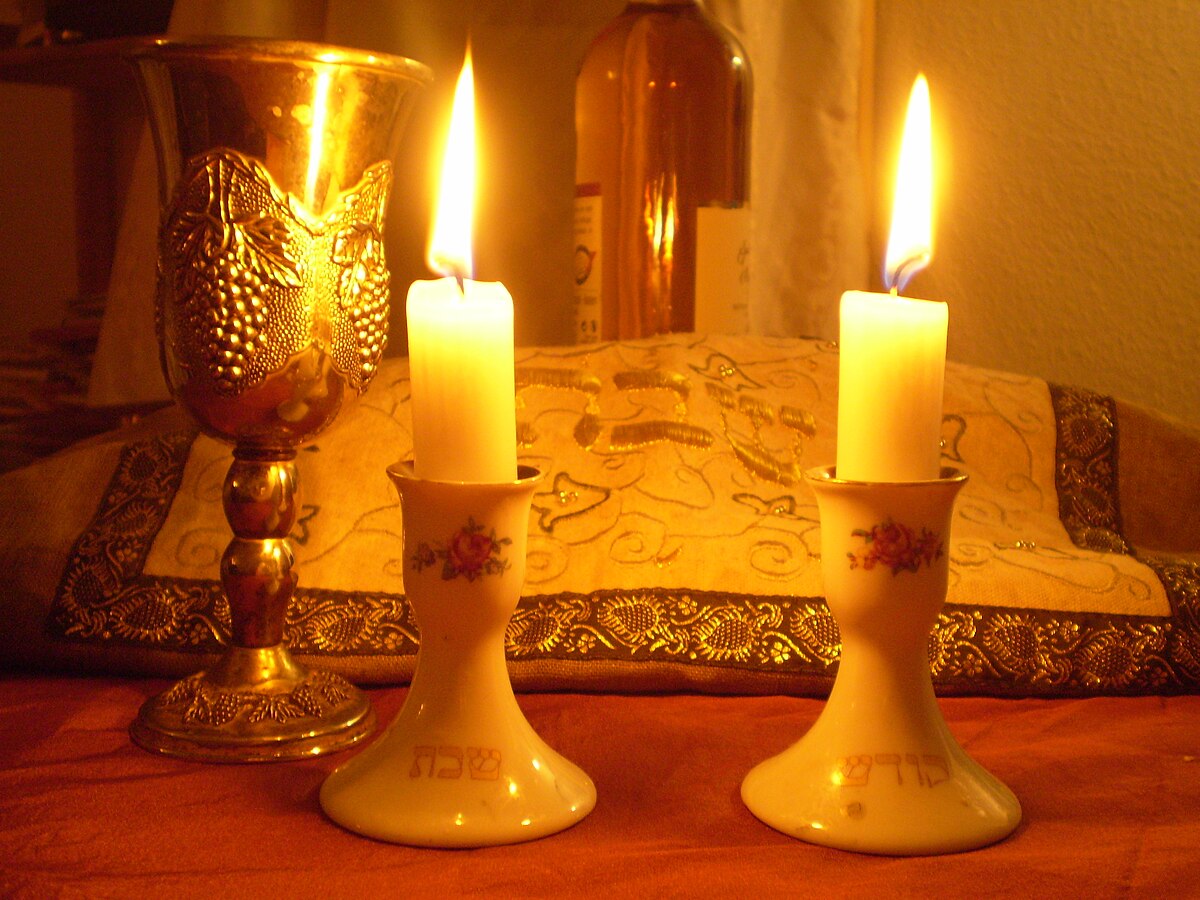
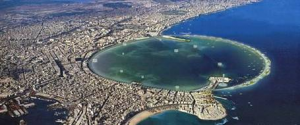 Александр Македонский умер молодым в 323 году до нашей эры в
Александр Македонский умер молодым в 323 году до нашей эры в 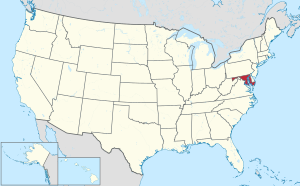 Свое имя Мэриленд получил в 1634 году в честь королевы Генриетты Марии (1609 — 1669), жены Карла I Стюарта, короля Англии, Шотландии и
Свое имя Мэриленд получил в 1634 году в честь королевы Генриетты Марии (1609 — 1669), жены Карла I Стюарта, короля Англии, Шотландии и 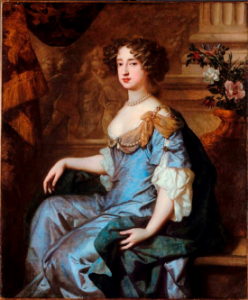 Ирландии. Она – мать двух английских монархов из династии Стюартов (Карла II и Якова II) и бабушка еще троих. По женской линии от нее ведут происхождение пять французских королей. Генриетта Мария была дочерью французского короля Генриха IV и флорентийки
Ирландии. Она – мать двух английских монархов из династии Стюартов (Карла II и Якова II) и бабушка еще троих. По женской линии от нее ведут происхождение пять французских королей. Генриетта Мария была дочерью французского короля Генриха IV и флорентийки 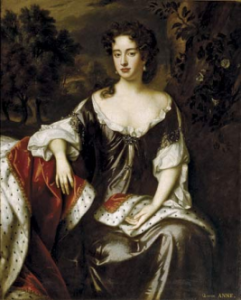 свободу вероисповедания. Сюда потянулись многие католики, преследованные в Англии. В 1694 году столица Мэриленда была перенесена в Провиденс (англ. – «Провидение»), который в 1708 году был переименован в Аннаполис в честь королевы Анны Стюарт, ставшей первым монархом соединенного Королевства Великобритания (т.е. объединившихся Англии и Шотландии). Эта идея отражена на гербе (печати) Аннаполиса – союз английской розы и шотландского чертополоха под единой короной.
свободу вероисповедания. Сюда потянулись многие католики, преследованные в Англии. В 1694 году столица Мэриленда была перенесена в Провиденс (англ. – «Провидение»), который в 1708 году был переименован в Аннаполис в честь королевы Анны Стюарт, ставшей первым монархом соединенного Королевства Великобритания (т.е. объединившихся Англии и Шотландии). Эта идея отражена на гербе (печати) Аннаполиса – союз английской розы и шотландского чертополоха под единой короной. Дом Стюартов по мужской линии прекратился в 1807 году, со смертью римского кардинала Генриха Бенедикта (внука Якова II), похороненного в Базилике Святого Петра в Риме. Внебрачная женская линия старшего брата кардинала продолжается и сегодня, но без прав на трон. Правда потомком Якова II и главой королевского дома Стюартов считает себя рожденный в Бельгии в 1958 году Майкл Роджер Лафосс (Michel Roger Lafosse). Он имел титул «Великого Защитника в Британии и англо-говорящем мире» зарегистрированного в наше время в Будапеште Императорского и Королевского Драконьего Двора и Ордена, претендовавшего на историческую связь с
Дом Стюартов по мужской линии прекратился в 1807 году, со смертью римского кардинала Генриха Бенедикта (внука Якова II), похороненного в Базилике Святого Петра в Риме. Внебрачная женская линия старшего брата кардинала продолжается и сегодня, но без прав на трон. Правда потомком Якова II и главой королевского дома Стюартов считает себя рожденный в Бельгии в 1958 году Майкл Роджер Лафосс (Michel Roger Lafosse). Он имел титул «Великого Защитника в Британии и англо-говорящем мире» зарегистрированного в наше время в Будапеште Императорского и Королевского Драконьего Двора и Ордена, претендовавшего на историческую связь с  Луизиана – штат на юге
Луизиана – штат на юге  Официальное прозвище Луизианы — Штат пеликанов. Государственная печать штата с изображением пеликана и девизом штата («Союз, справедливость, доверие») была утверждена в 1902 году. Это геральдическое изображение называется «Пеликан в самопожертвовании». Эта птица своим клювом разрывает собственную грудь и кормит голодных птенцов своей кровью, стилизованных как три капли — три точки
Официальное прозвище Луизианы — Штат пеликанов. Государственная печать штата с изображением пеликана и девизом штата («Союз, справедливость, доверие») была утверждена в 1902 году. Это геральдическое изображение называется «Пеликан в самопожертвовании». Эта птица своим клювом разрывает собственную грудь и кормит голодных птенцов своей кровью, стилизованных как три капли — три точки  Луиза Милосердная (1644 – 1710) – фаворитка французского короля Людовика XIV (во французском произношении Луи), в честь которого назван
Луиза Милосердная (1644 – 1710) – фаворитка французского короля Людовика XIV (во французском произношении Луи), в честь которого назван 

 из 4
из 4 
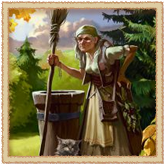
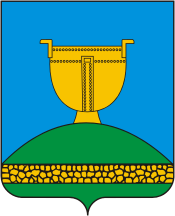 На гербе Высокогорского района изображен золотой
На гербе Высокогорского района изображен золотой  Три кочерги
Три кочерги 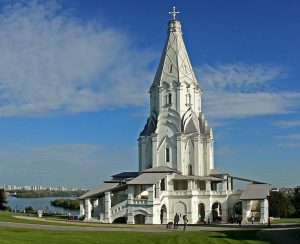

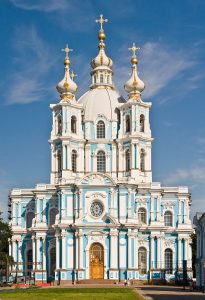
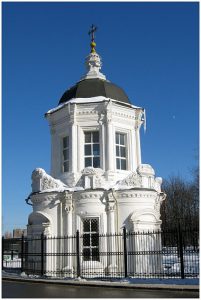
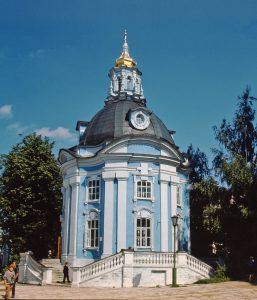
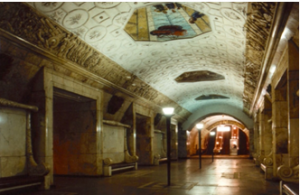
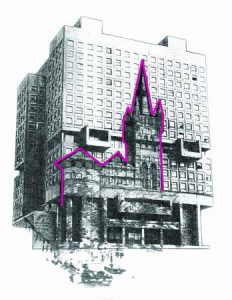 На территории современного Калининграда находилась первая столица / главное святилище пруссов (Твангсте). В середине XIII века на этом месте появился тевтонский замок (Кёнигсберг), а в ХХ веке здесь был построен Дом Советов. Внешне он напоминает голову робота, за образом которого могут стоять, известные из рассказов Крайона,
На территории современного Калининграда находилась первая столица / главное святилище пруссов (Твангсте). В середине XIII века на этом месте появился тевтонский замок (Кёнигсберг), а в ХХ веке здесь был построен Дом Советов. Внешне он напоминает голову робота, за образом которого могут стоять, известные из рассказов Крайона, 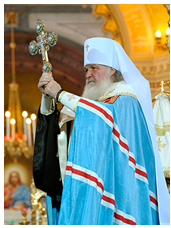


 Установлением в
Установлением в 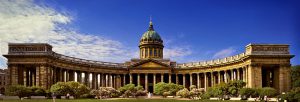
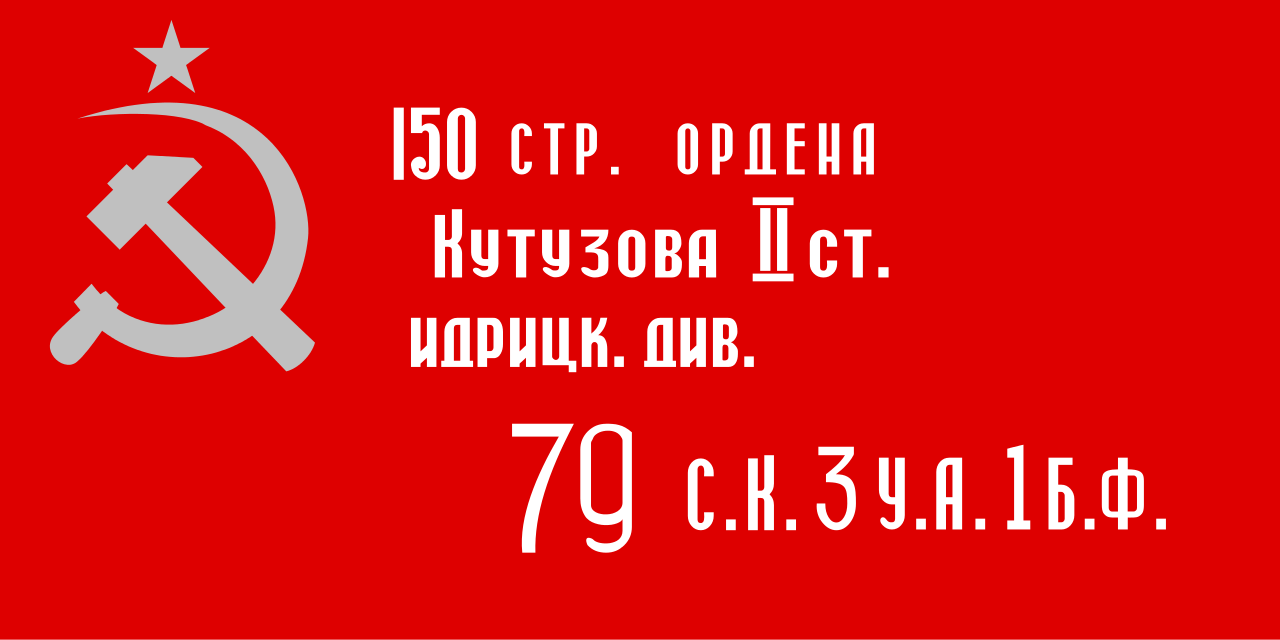
 В 1996 году, будучи митрополитом Смоленский и Калининградским, Кирилл и тогдашний Президент РФ Борис Ельцин, совершили торжественную закладку в центре Калининграда храма Христа Спасителя. В его основание ими была положена капсула с землей из-под храма Христа Спасителя в Москве как символ преемства и неразрывной духовной связи Калининграда и остальной части России. В алтарной стене самого Храма Христа Спасителя в Москве находится
В 1996 году, будучи митрополитом Смоленский и Калининградским, Кирилл и тогдашний Президент РФ Борис Ельцин, совершили торжественную закладку в центре Калининграда храма Христа Спасителя. В его основание ими была положена капсула с землей из-под храма Христа Спасителя в Москве как символ преемства и неразрывной духовной связи Калининграда и остальной части России. В алтарной стене самого Храма Христа Спасителя в Москве находится 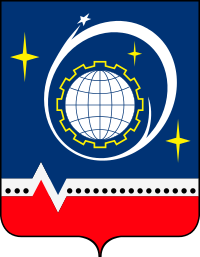 Наукоград Коро
Наукоград Коро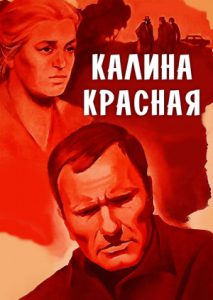 Московской области, на часть площадей вышеуказанного завода, переведенного на
Московской области, на часть площадей вышеуказанного завода, переведенного на 
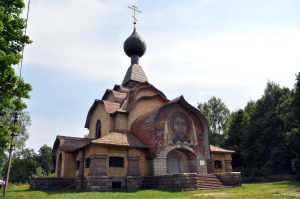 Недалеко от Смоленска расположена бывшая усадьба Тенишевых – знаменитое Талашкино. Там, на вершине холма, была построен Храм Святого Духа, напоминающая одновременно древнюю пирамиду, русский шатер и
Недалеко от Смоленска расположена бывшая усадьба Тенишевых – знаменитое Талашкино. Там, на вершине холма, была построен Храм Святого Духа, напоминающая одновременно древнюю пирамиду, русский шатер и 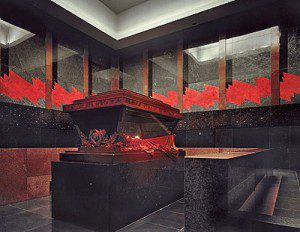 Т.к. планировалось разместить в этом монументальном храме семейную усыпальницу Тенишевых, его иногда называют Талашкинский мавзолей. Это интуитивное определение имеет под собой и реальные связи с
Т.к. планировалось разместить в этом монументальном храме семейную усыпальницу Тенишевых, его иногда называют Талашкинский мавзолей. Это интуитивное определение имеет под собой и реальные связи с 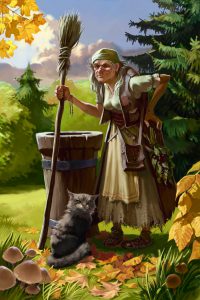 В результате смены эпох многие ведические герои стали нарицательными персонажами (временно), в славянской мифологии всегда оставались многоплановые подсказки. Например, обратилась в страшилку для маленьких детей почитаемая Богиня — хранительница Живой Силы. Однако, хотя Баба Яга имеет несколько зловещий вид, но именно она любезно встречает героя и показывает ему путь в заветную страну, предварительно испытав и убедившись, что тот дело пытает, а не уклоняется от него.
В результате смены эпох многие ведические герои стали нарицательными персонажами (временно), в славянской мифологии всегда оставались многоплановые подсказки. Например, обратилась в страшилку для маленьких детей почитаемая Богиня — хранительница Живой Силы. Однако, хотя Баба Яга имеет несколько зловещий вид, но именно она любезно встречает героя и показывает ему путь в заветную страну, предварительно испытав и убедившись, что тот дело пытает, а не уклоняется от него. 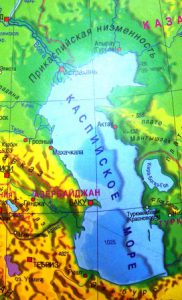 Путешествие героя – это обряд посвящения, рассказ в образах о воссоединении с Высшим Я. Это – истинное бессмертие. Единственный настоящий враг – внутренний. Победа человека над самим собой (своей низшей природой) –
Путешествие героя – это обряд посвящения, рассказ в образах о воссоединении с Высшим Я. Это – истинное бессмертие. Единственный настоящий враг – внутренний. Победа человека над самим собой (своей низшей природой) – 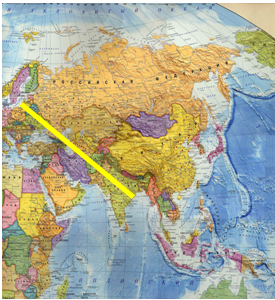 В 2001 году было передано из Индии пророчество о будущем России и рассказ о той древней Золотой нити, которая связывает Россию с Индией, проходя (условно) от Калининграда до Пури, штат
В 2001 году было передано из Индии пророчество о будущем России и рассказ о той древней Золотой нити, которая связывает Россию с Индией, проходя (условно) от Калининграда до Пури, штат 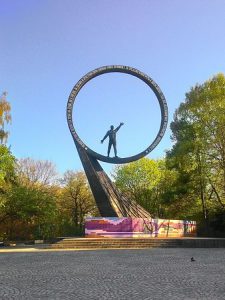 В 1980 году в Калининграде был установлен памятник в честь покорителей Космоса. При установке ему дали название «Покорителям ближней Вселенной». Посещение дальней Вселенной, а также Вселенных, о которых сохранились знания в Индии, будет возможным только после раскрытия духовных способностей. Сегодня этот монумент называют еще и «Землякам-космонавтам». Здесь установлены памятные доски, в том числе и А.А. Леонова.
В 1980 году в Калининграде был установлен памятник в честь покорителей Космоса. При установке ему дали название «Покорителям ближней Вселенной». Посещение дальней Вселенной, а также Вселенных, о которых сохранились знания в Индии, будет возможным только после раскрытия духовных способностей. Сегодня этот монумент называют еще и «Землякам-космонавтам». Здесь установлены памятные доски, в том числе и А.А. Леонова.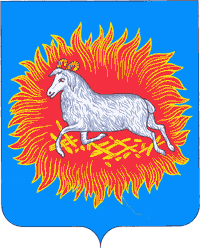 Примечательно, что на гербе Каргополя изображен овен (баран) в пламени. Почему был дан именно такой герб чётких объяснений нет. Во времена Ивана Грозного, Каргополь достиг своего расцвета и был одним из наиболее населённых русских городов. Однако он никогда не был центром овцеводства, чтобы помещать барана на герб. Как и в случае с гербом Великого Устюга (Нептун /
Примечательно, что на гербе Каргополя изображен овен (баран) в пламени. Почему был дан именно такой герб чётких объяснений нет. Во времена Ивана Грозного, Каргополь достиг своего расцвета и был одним из наиболее населённых русских городов. Однако он никогда не был центром овцеводства, чтобы помещать барана на герб. Как и в случае с гербом Великого Устюга (Нептун / 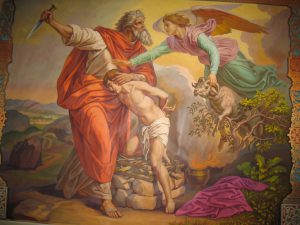 Самый известный эпизод в истории, связанный с сожжением барана – это принесение его в жертву вместо Исаака (испытание
Самый известный эпизод в истории, связанный с сожжением барана – это принесение его в жертву вместо Исаака (испытание 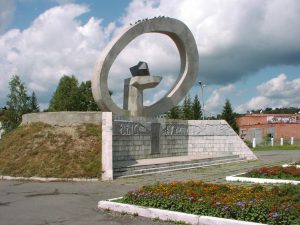 Сегодня он привлекает исследователей своими загадочными мегалитами в Горной Шории. Нельзя отрицать пребывание здесь в далеком прошлом очень высокоразвитой цивилизации. Не случайно именно в Кемеровской области работает Сергей Канашевский, раскрывающий тайны древних цивилизаций, существовавших на территории современной России. Одна из них –
Сегодня он привлекает исследователей своими загадочными мегалитами в Горной Шории. Нельзя отрицать пребывание здесь в далеком прошлом очень высокоразвитой цивилизации. Не случайно именно в Кемеровской области работает Сергей Канашевский, раскрывающий тайны древних цивилизаций, существовавших на территории современной России. Одна из них – 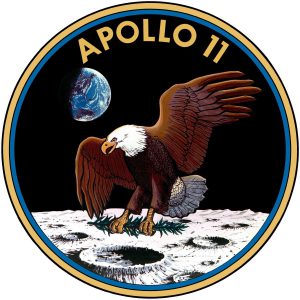 Издавна, Прокопия называют Жнецом или Жатвенником, т.к. в день его памяти (21 июля) начинается жатва. Это же день
Издавна, Прокопия называют Жнецом или Жатвенником, т.к. в день его памяти (21 июля) начинается жатва. Это же день 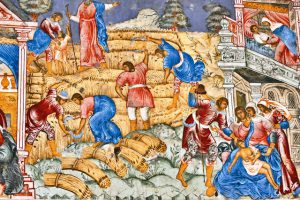 В «Материалах Ра» говорится, что уборка урожая – это процесс, посредством которого душа и/или планета «выпускается» из одной плотности в другую. Это возможность
В «Материалах Ра» говорится, что уборка урожая – это процесс, посредством которого душа и/или планета «выпускается» из одной плотности в другую. Это возможность  Спандарян, Каменев и другие. В Енисейске отбывал ссылку в 1924 году архиепископ Лука (Войно-Ясенецкий), доктор медицинский наук, профессор хирургии, доктор богословия, лауреат Сталинской премии первой степени. Памятник ему установлен в сквере у Спасо-Преображенского монастыря — старейшего монастыря Красноярской митрополии. Этот монастырь был основан на месте молитвенных подвигов инока Тимофея
Спандарян, Каменев и другие. В Енисейске отбывал ссылку в 1924 году архиепископ Лука (Войно-Ясенецкий), доктор медицинский наук, профессор хирургии, доктор богословия, лауреат Сталинской премии первой степени. Памятник ему установлен в сквере у Спасо-Преображенского монастыря — старейшего монастыря Красноярской митрополии. Этот монастырь был основан на месте молитвенных подвигов инока Тимофея 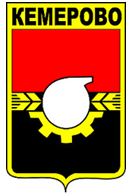 крупнейший на Украине памятник
крупнейший на Украине памятник  Уникальный памятник Ленину стоит в центре Кемерово, перед главным фасадом здания областной администрации. Это единственный в мире памятник основателю Советского государства в пальто, которое застегнуто налево. Отлит в Ленинграде, т.е. на
Уникальный памятник Ленину стоит в центре Кемерово, перед главным фасадом здания областной администрации. Это единственный в мире памятник основателю Советского государства в пальто, которое застегнуто налево. Отлит в Ленинграде, т.е. на 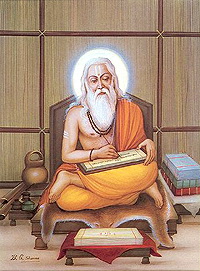 Согласно «
Согласно «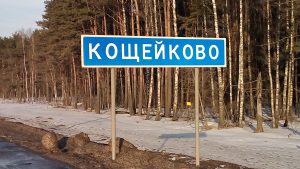 В буддийской мифологии, Кашьяпа или Махакашьяпа был одним из самых уважаемых учеников
В буддийской мифологии, Кашьяпа или Махакашьяпа был одним из самых уважаемых учеников  В журнале «Планета Ангелов» №2(02) 2018 рассказывается о крупном ученом-филологе, мудреце-языкотворце
В журнале «Планета Ангелов» №2(02) 2018 рассказывается о крупном ученом-филологе, мудреце-языкотворце 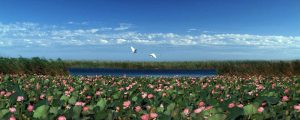
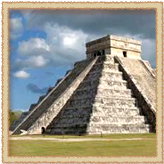
 называли Волосынями — жёнами бога Велеса. Именно торжествующий Велес (с ореолом в виде звезды / нимба) стоит за спиной Рюрика в Великом Новгороде, на памятнике 1000-летия России. Велес считается подателем
называли Волосынями — жёнами бога Велеса. Именно торжествующий Велес (с ореолом в виде звезды / нимба) стоит за спиной Рюрика в Великом Новгороде, на памятнике 1000-летия России. Велес считается подателем 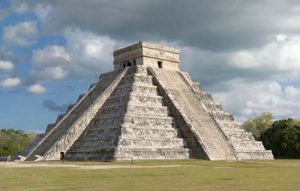 строго по четырем сторонам света.
строго по четырем сторонам света.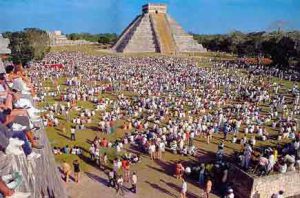 Тысячи людей дважды в год (в дни весеннего и осеннего равноденствия) собираются в Чичен-Ице в ожидании удивительного зрелища — на пирамиде возникает особый визуальный эффект, связанный с Пернатым Змеем, которому посвящен этот храм.
Тысячи людей дважды в год (в дни весеннего и осеннего равноденствия) собираются в Чичен-Ице в ожидании удивительного зрелища — на пирамиде возникает особый визуальный эффект, связанный с Пернатым Змеем, которому посвящен этот храм.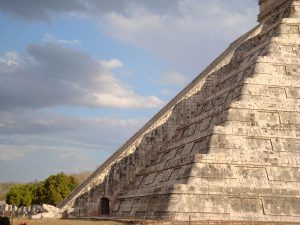 Повернув по отношению к Солнцу эту пирамиду так, чтобы ежегодно в день прохождения Плеяд на ее склоне происходило это зрелище, создатели этой пирамиды дали утешение современникам и оставили знак потомкам…
Повернув по отношению к Солнцу эту пирамиду так, чтобы ежегодно в день прохождения Плеяд на ее склоне происходило это зрелище, создатели этой пирамиды дали утешение современникам и оставили знак потомкам…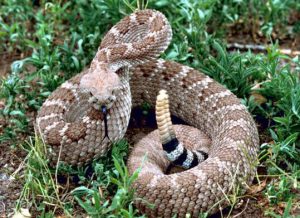
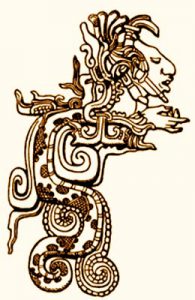 У гремучей змеи каждые 20 дней меняются зубы. В календаре майя «
У гремучей змеи каждые 20 дней меняются зубы. В календаре майя «
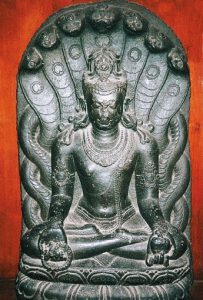
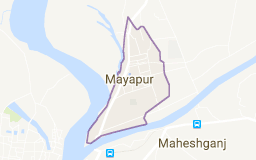 Расположение на слиянии двух рек (Ганги и Джаланги ) роднит Маяпур с Великим Устюгом, чьим символом является
Расположение на слиянии двух рек (Ганги и Джаланги ) роднит Маяпур с Великим Устюгом, чьим символом является 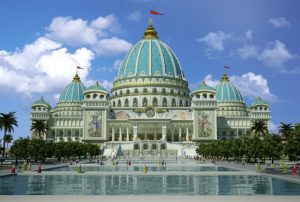 Сегодня в Маяпуре строится крупнейший в мире Ведический Планетарий. Он будет демонстрировать научную основу Вед и показывать устройство Вселенной согласно Шримад Бхагаватам – священной книге Кришнаизма, в которой изложена основная суть всех Вед.
Сегодня в Маяпуре строится крупнейший в мире Ведический Планетарий. Он будет демонстрировать научную основу Вед и показывать устройство Вселенной согласно Шримад Бхагаватам – священной книге Кришнаизма, в которой изложена основная суть всех Вед.
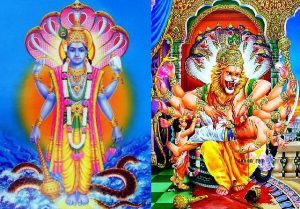 Наги оказали влияние не только на Буддизм, но и на родившийся в Индии позднее Индуизм. Шеша — царь всех нагов (Нагараджа) стал сопроводителем Вишну-хранителя. Шеша выступает олицетворением вечного времени, а каждый из витков его свернувшегося тела символизирует одну из Вселенных материального мира с ее историей. Часто этот змей Шеша выступает как своеобразная корона для воплощений Вишну, чаще всего Кришны, открывшего миру учение о Йоге на
Наги оказали влияние не только на Буддизм, но и на родившийся в Индии позднее Индуизм. Шеша — царь всех нагов (Нагараджа) стал сопроводителем Вишну-хранителя. Шеша выступает олицетворением вечного времени, а каждый из витков его свернувшегося тела символизирует одну из Вселенных материального мира с ее историей. Часто этот змей Шеша выступает как своеобразная корона для воплощений Вишну, чаще всего Кришны, открывшего миру учение о Йоге на 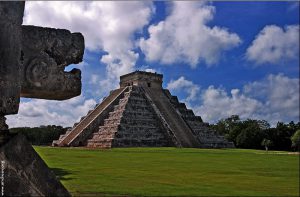 погружения людей в плотную материю. Одними из тех, кто представительствовал на Земле с целью изоляции человечества от его духовных истоков были Плеядеанские Змеи – родственный союз цивилизаций Плеядеанских Змей с разных планет различных звездных систем Плеяд. Они были в числе
погружения людей в плотную материю. Одними из тех, кто представительствовал на Земле с целью изоляции человечества от его духовных истоков были Плеядеанские Змеи – родственный союз цивилизаций Плеядеанских Змей с разных планет различных звездных систем Плеяд. Они были в числе 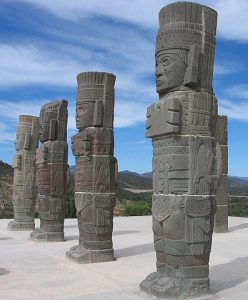 Человек генетически связан с Плеядеанскими Змеями. Плеяды являются одной из 16-ти космических цивилизаций, участвующих в создании Многомерного Генома человечества. Каждая из них имела свою зону ответственности при формировании Генома. С одной стороны, Плеядеанские Змеи отвечали за создание в Генетике программы
Человек генетически связан с Плеядеанскими Змеями. Плеяды являются одной из 16-ти космических цивилизаций, участвующих в создании Многомерного Генома человечества. Каждая из них имела свою зону ответственности при формировании Генома. С одной стороны, Плеядеанские Змеи отвечали за создание в Генетике программы 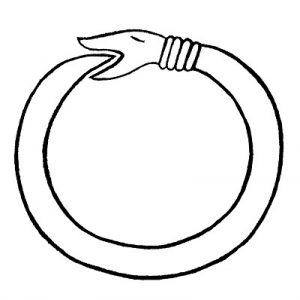
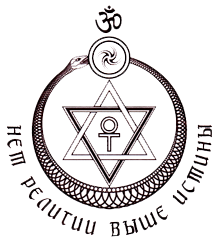 Этот символ использовался основателями
Этот символ использовался основателями 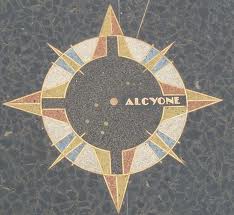 В третьем Откровении Инсайдер рассказывает о созвездии Плеяд и её центральной (и ярчайшей) звезде Альционе, вокруг которой вращается наше Солнце с её планетами, включая Венеру, с которой связана коллективная сущность Инсайдера и
В третьем Откровении Инсайдер рассказывает о созвездии Плеяд и её центральной (и ярчайшей) звезде Альционе, вокруг которой вращается наше Солнце с её планетами, включая Венеру, с которой связана коллективная сущность Инсайдера и 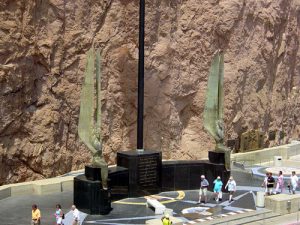 Инсайдер обращает внимание, что «ноги статуй указывают непосредственно вниз, на землю, в то время как руки и кончики крыльев устремлены в небо. Жизненная Энергия втекает в человеческий комплекс тела\разума\духа из Земли, через ноги. В то же время Энергия Разума Бесконечного Создателя течёт сверху вниз, заходя через коронную «чакру». Крылья обозначают присущую нам (Люциферу) Божественность. Также заметьте, что фигура в сидячем положении. «Место [укоренения] нашей (Люцифера) Силы соединяет Небо и Землю, и всё должно проходить через нас.»».
Инсайдер обращает внимание, что «ноги статуй указывают непосредственно вниз, на землю, в то время как руки и кончики крыльев устремлены в небо. Жизненная Энергия втекает в человеческий комплекс тела\разума\духа из Земли, через ноги. В то же время Энергия Разума Бесконечного Создателя течёт сверху вниз, заходя через коронную «чакру». Крылья обозначают присущую нам (Люциферу) Божественность. Также заметьте, что фигура в сидячем положении. «Место [укоренения] нашей (Люцифера) Силы соединяет Небо и Землю, и всё должно проходить через нас.»».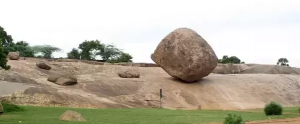
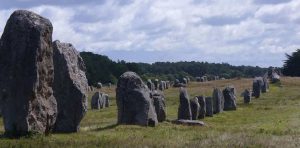 Доподлинно неизвестно происхождение названия французского города Брест (побратим Денвера), расположенного на самой западной стороне полуострова Бретань. Такая же ситуация с французским городком Карнак в Бретани. Карнакские камни — условное название крупнейшего в мире скопления мегалитических сооружений.
Доподлинно неизвестно происхождение названия французского города Брест (побратим Денвера), расположенного на самой западной стороне полуострова Бретань. Такая же ситуация с французским городком Карнак в Бретани. Карнакские камни — условное название крупнейшего в мире скопления мегалитических сооружений.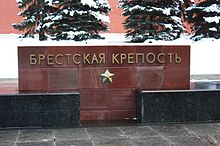 В веках будет жить героический подвиг защитников Брестской крепости в 1941 году. В её Белом дворце в 1918 году был заключен неоднозначный Брестский мир, в результате которого от России были отторгнуты большие территории и значительная часть сельскохозяйственно-промышленной базы страны. Вступление США в Первую мировую войну привело в конечном итоге к капитуляции Германии и разрыву перед ней большевиками Брестского мира. Это позволило не только спасти авторитет
В веках будет жить героический подвиг защитников Брестской крепости в 1941 году. В её Белом дворце в 1918 году был заключен неоднозначный Брестский мир, в результате которого от России были отторгнуты большие территории и значительная часть сельскохозяйственно-промышленной базы страны. Вступление США в Первую мировую войну привело в конечном итоге к капитуляции Германии и разрыву перед ней большевиками Брестского мира. Это позволило не только спасти авторитет 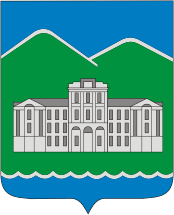
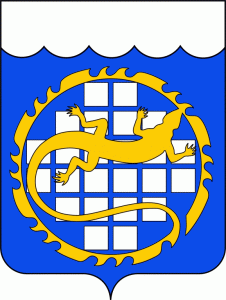
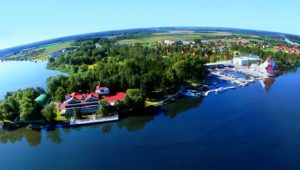
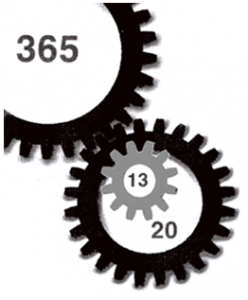 Любая дата составлялась из элементов обоих календарей. Даты в «календарном круге» повторялись лишь через 52 года. Комбинация Цолькина и Хааба повторялась каждые 18’980 дней (52×365).
Любая дата составлялась из элементов обоих календарей. Даты в «календарном круге» повторялись лишь через 52 года. Комбинация Цолькина и Хааба повторялась каждые 18’980 дней (52×365).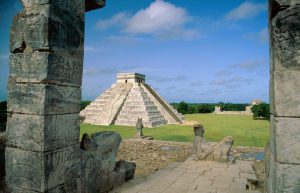 Ориентированный на Плеяды, календарь Майя использовался и другими центральноамериканскими народами — ацтеками, тольтеками и др. Любопытно, что календарь майя лучше соотносится с астрономическим годом, чем современный Григорианский календарь. Гражданский или солнечный год майя имел длину 365,242203 дня, что более точно соответствует периоду оборота Земли вокруг Солнца, чем продолжительность года в григорианском (современном) календаре — 365,2425 дня.
Ориентированный на Плеяды, календарь Майя использовался и другими центральноамериканскими народами — ацтеками, тольтеками и др. Любопытно, что календарь майя лучше соотносится с астрономическим годом, чем современный Григорианский календарь. Гражданский или солнечный год майя имел длину 365,242203 дня, что более точно соответствует периоду оборота Земли вокруг Солнца, чем продолжительность года в григорианском (современном) календаре — 365,2425 дня.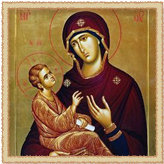
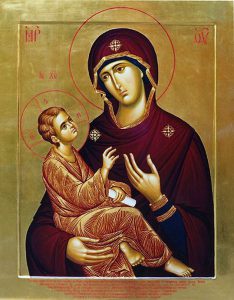 Холмская икона Божией Матери является святыней всей Западной Украины. Она почитается всеми христианами — православными и католиками. Папа Римский украшал её золотыми коронами. Перед ней молилась Русская императорская семья, включая цесаревича Николая.
Холмская икона Божией Матери является святыней всей Западной Украины. Она почитается всеми христианами — православными и католиками. Папа Римский украшал её золотыми коронами. Перед ней молилась Русская императорская семья, включая цесаревича Николая.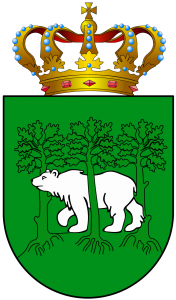 Само слово «холм» —
Само слово «холм» — 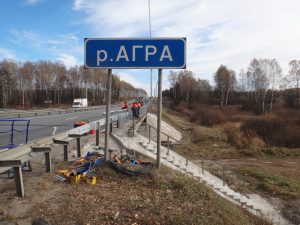
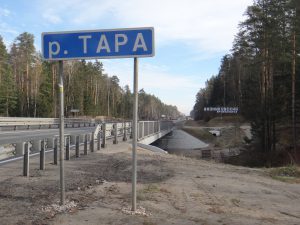 лов
лов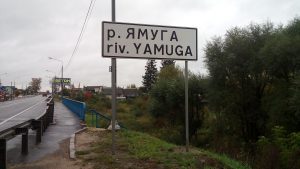 На территориях современных Московской и Тверской областях сохранились названия рек, уходящие корнями к санскриту – языку богов, которым он считается в Индии.
На территориях современных Московской и Тверской областях сохранились названия рек, уходящие корнями к санскриту – языку богов, которым он считается в Индии.  Вышеуказанный индийский город Агра стоит на священной реке Ямуна, как и Дели, ставший столицей Индии после Агры.
Вышеуказанный индийский город Агра стоит на священной реке Ямуна, как и Дели, ставший столицей Индии после Агры.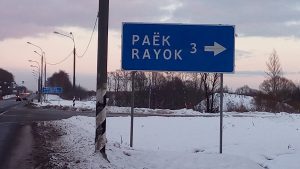
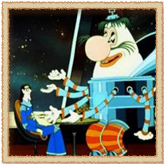
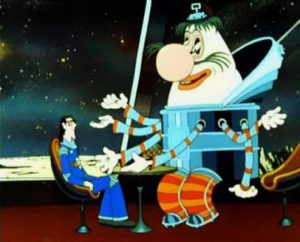 «Тайна третьей планеты» — один из самых популярных советских научно-фантастических мультфильмов. Создавший его Роман Качанов своим творчеством оказал заметное влияние на отечественную и зарубежную мультипликацию. Фильмы этого режиссёра-мультипликатора, включая «Варежку» и «Крокодила Гену», стали признанной классикой отечественной и мировой мультипликации.
«Тайна третьей планеты» — один из самых популярных советских научно-фантастических мультфильмов. Создавший его Роман Качанов своим творчеством оказал заметное влияние на отечественную и зарубежную мультипликацию. Фильмы этого режиссёра-мультипликатора, включая «Варежку» и «Крокодила Гену», стали признанной классикой отечественной и мировой мультипликации.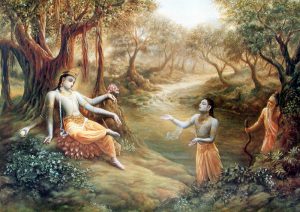
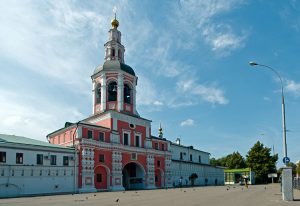
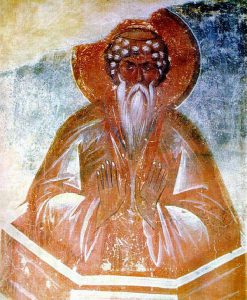
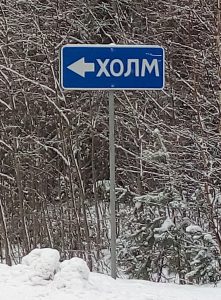
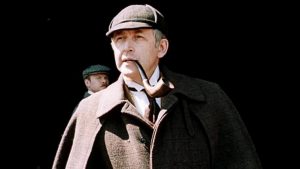 Возможно, что помимо великолепного актерского мастерства Василия Ливанова, есть и глубинные причины почему именно российский Холмс признан лучшим в мире.
Возможно, что помимо великолепного актерского мастерства Василия Ливанова, есть и глубинные причины почему именно российский Холмс признан лучшим в мире.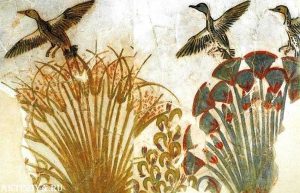 Утки в зарослях папируса – это один из любимых сюжетов росписи во времена
Утки в зарослях папируса – это один из любимых сюжетов росписи во времена 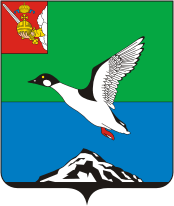

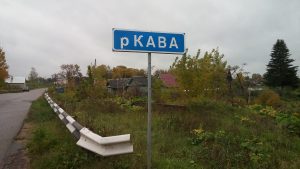
 гуманоидной расы, населяющая планету Пандора в художественном фильме «Аватар». Они схожи с кошачьими богами Древнего Египта (Сехмет и др.). Синий окрас кожи роднит Нави с индийскими богами, прообразами которых были
гуманоидной расы, населяющая планету Пандора в художественном фильме «Аватар». Они схожи с кошачьими богами Древнего Египта (Сехмет и др.). Синий окрас кожи роднит Нави с индийскими богами, прообразами которых были 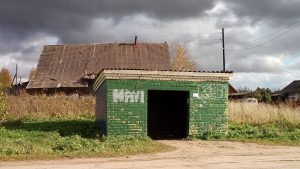 В «Аватаре» культура Нави основана на глубокой духовной связи с природой. Это вдохновило некоторых из нынешних землян на конкретные действия по защите экологии планеты. Неизвестно добрались ли они до тверских деревень Нави и Иван-Гора, но рядом с последней есть остановка зелёного цвета, c надписью на английском языке Navi…
В «Аватаре» культура Нави основана на глубокой духовной связи с природой. Это вдохновило некоторых из нынешних землян на конкретные действия по защите экологии планеты. Неизвестно добрались ли они до тверских деревень Нави и Иван-Гора, но рядом с последней есть остановка зелёного цвета, c надписью на английском языке Navi…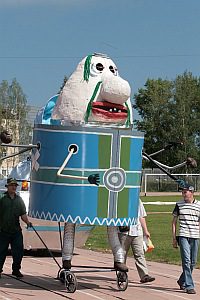 Примечательна фотография Громозеки в карнавальном шествии, размещённая в статье «Википедии» об этом персонаже. Она открывает ещё одну грань этого образа. Помимо количества рук, сравнимого с индийскими божествами, раскрас тела Громозеки напоминает флаг и печать города Портленда, имеющего связи с древними создателями каменных ликов, находящихся ныне на
Примечательна фотография Громозеки в карнавальном шествии, размещённая в статье «Википедии» об этом персонаже. Она открывает ещё одну грань этого образа. Помимо количества рук, сравнимого с индийскими божествами, раскрас тела Громозеки напоминает флаг и печать города Портленда, имеющего связи с древними создателями каменных ликов, находящихся ныне на 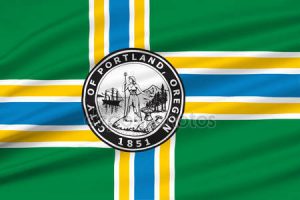 Устюга. Как было сказано выше, свой статус Великого города, Устюг получил от Ивана Грозного. По указу Ивана Грозного также был основан Архангельск на берегах
Устюга. Как было сказано выше, свой статус Великого города, Устюг получил от Ивана Грозного. По указу Ивана Грозного также был основан Архангельск на берегах 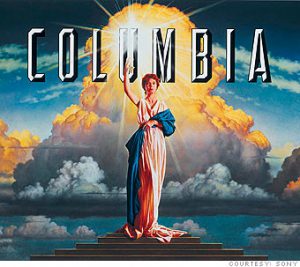
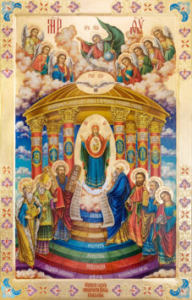 Примечательна женская фигура на печати (гербе) города Портленд, стоящем на реке Колумбия. В официальном описании эту фигуру называют Королевой Коммерции. Над её головой расположена шестиконечная звезда – символ равновесия двух Начал
Примечательна женская фигура на печати (гербе) города Портленд, стоящем на реке Колумбия. В официальном описании эту фигуру называют Королевой Коммерции. Над её головой расположена шестиконечная звезда – символ равновесия двух Начал 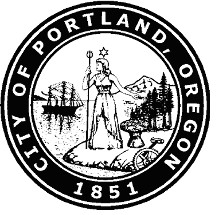 Мироздания, по сути – Духа и Материи. Эта Королева с городского герба стала прототипом знаменитой статуи Портлендия (Portlandia), которая находится в центре города, над входом в Портленд-билдинг. Если Портландию считают богиней торговли, то богом торговли издавна является Гермес, который выражал идею Божественного баланса двух Начал. Богиня Портландия считается покровительницей города и является второй по величине статуей в Америке, после знаменитой Статуи Свободы, находящейся на острове напротив
Мироздания, по сути – Духа и Материи. Эта Королева с городского герба стала прототипом знаменитой статуи Портлендия (Portlandia), которая находится в центре города, над входом в Портленд-билдинг. Если Портландию считают богиней торговли, то богом торговли издавна является Гермес, который выражал идею Божественного баланса двух Начал. Богиня Портландия считается покровительницей города и является второй по величине статуей в Америке, после знаменитой Статуи Свободы, находящейся на острове напротив 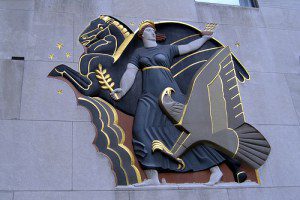 Колумбия держит чашу Божественного знания в Рокфеллеровском центре (Rockefeller Center). В христианской традиции единственной женщиной, которая изображается с чашей, является святая
Колумбия держит чашу Божественного знания в Рокфеллеровском центре (Rockefeller Center). В христианской традиции единственной женщиной, которая изображается с чашей, является святая 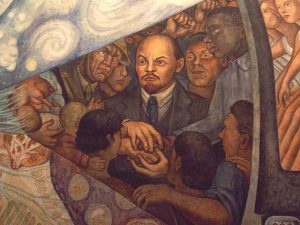
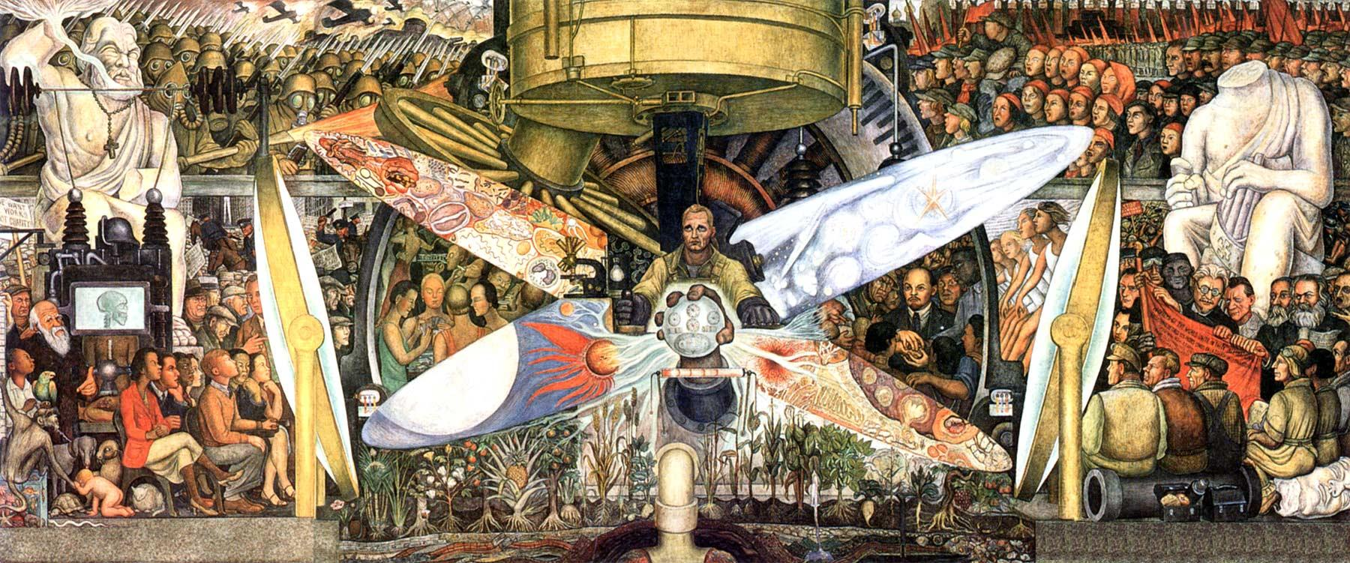 Как было сказано выше, нью-йоркская фреска предназначалась для главного здания Рокфеллеровского центра. Офис Рокфеллеров в этом небоскрёбе находился на символическом 56-м этаже, в кабинете 5600. В сумме 5 и 6 дают символическое число
Как было сказано выше, нью-йоркская фреска предназначалась для главного здания Рокфеллеровского центра. Офис Рокфеллеров в этом небоскрёбе находился на символическом 56-м этаже, в кабинете 5600. В сумме 5 и 6 дают символическое число 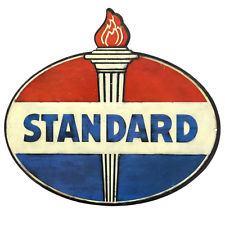 В день весеннего равноденствия 20 марта 2017 года, в возрасте
В день весеннего равноденствия 20 марта 2017 года, в возрасте 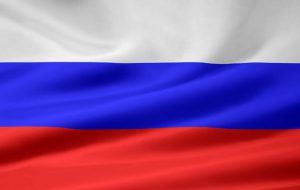 Джон Рокфеллер – будущий основатель «Стандарт Ойл» (Standard Oil) — родился в 1839 году в Нью-Йорке, имеющем с Россией
Джон Рокфеллер – будущий основатель «Стандарт Ойл» (Standard Oil) — родился в 1839 году в Нью-Йорке, имеющем с Россией 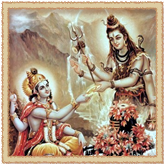
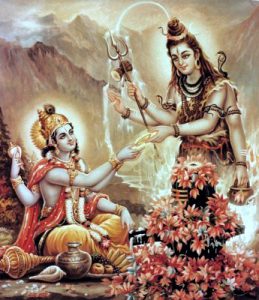 Цивилизация Аримойя существовала в период 327 тыс. лет – 286 тыс. лет назад. Именно они сотворяли кристаллическую структуру для приёма биоматриц человеческих тел.
Цивилизация Аримойя существовала в период 327 тыс. лет – 286 тыс. лет назад. Именно они сотворяли кристаллическую структуру для приёма биоматриц человеческих тел.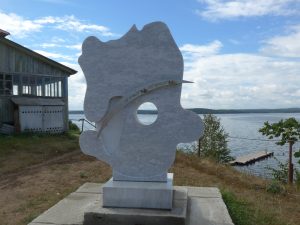 Сегодня Чебаркуль (расположенный в 70 км. от Челябинска) известен, прежде всего, благодаря метеориту, упавшему в озеро в 2013 году. Однако, история этого места намного глубже. Журнал «Мировой Ченнелинг» сообщает, что города с названием Аримойя существовали и в долемурийскую эпоху и в лемурий
Сегодня Чебаркуль (расположенный в 70 км. от Челябинска) известен, прежде всего, благодаря метеориту, упавшему в озеро в 2013 году. Однако, история этого места намного глубже. Журнал «Мировой Ченнелинг» сообщает, что города с названием Аримойя существовали и в долемурийскую эпоху и в лемурий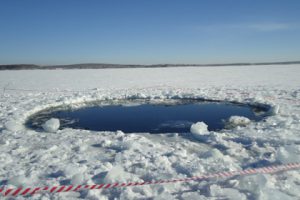 ские времена. Как было сказано выше, Лемурия возникла порядка 100 тыс. лет назад. Потом время стёрло эти названия с лица планеты. Однако спустя тысячелетия, на Южном Урале древние арии построили свою столицу — другой город Аримойя. Они же арии построили
ские времена. Как было сказано выше, Лемурия возникла порядка 100 тыс. лет назад. Потом время стёрло эти названия с лица планеты. Однако спустя тысячелетия, на Южном Урале древние арии построили свою столицу — другой город Аримойя. Они же арии построили 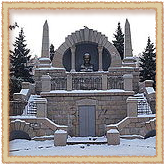
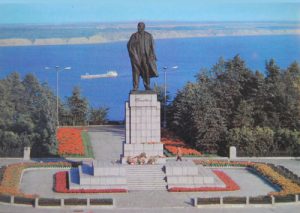 Ленин – одна из самых противоречивых фигур ХХ века. Его высокие идеи оценили даже мудрецы на Гималаях. Сказанное им «учиться, учиться, учиться» есть формула умения. На санскрите она звучит как «ТАТТ-САТ-ТАТТ» или «постигать, бесконечно постигая». Детство и юность Ленина прошли на Волге – великой русской реке, которая является духовной основой многонациональной и многокультурной русской цивилизации, предназначение которой быть для мира духовным маяком. Хосе Аргуэльес, о котором речь пойдет ниже, указывал, что «рус» — это древнее название силы гармонического упорядочивания явлений.
Ленин – одна из самых противоречивых фигур ХХ века. Его высокие идеи оценили даже мудрецы на Гималаях. Сказанное им «учиться, учиться, учиться» есть формула умения. На санскрите она звучит как «ТАТТ-САТ-ТАТТ» или «постигать, бесконечно постигая». Детство и юность Ленина прошли на Волге – великой русской реке, которая является духовной основой многонациональной и многокультурной русской цивилизации, предназначение которой быть для мира духовным маяком. Хосе Аргуэльес, о котором речь пойдет ниже, указывал, что «рус» — это древнее название силы гармонического упорядочивания явлений.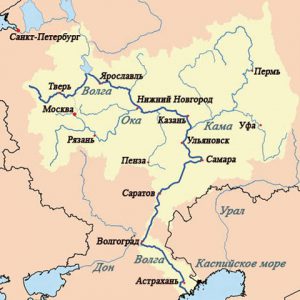
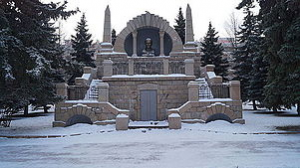
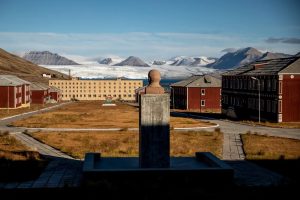
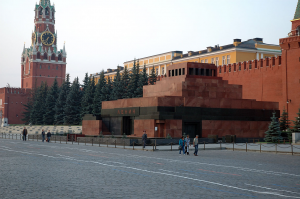 Известный современный исследователь наследия древних майя и организатор Планетарной Сети Искусств как продолжения Пакта Рериха, кавалер медали Николая Рериха – Хосе Аргуэльес высоко ценил вклад Ленина в планетарную эволюцию. Мавзолей Ленина зачастую ошибочно сравнивают с зиккуратом. Чтобы понять планетарный замысел, необходимо смотреть вглубь, зачастую в прямом смысле этого слова. В зиккуратах не хоронили, у них была другая функция.
Известный современный исследователь наследия древних майя и организатор Планетарной Сети Искусств как продолжения Пакта Рериха, кавалер медали Николая Рериха – Хосе Аргуэльес высоко ценил вклад Ленина в планетарную эволюцию. Мавзолей Ленина зачастую ошибочно сравнивают с зиккуратом. Чтобы понять планетарный замысел, необходимо смотреть вглубь, зачастую в прямом смысле этого слова. В зиккуратах не хоронили, у них была другая функция.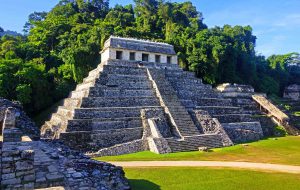 У мавзолея Ленина очень много общего с Храма надписей в Паленке. Это место называют жемчужиной майя. Храм надписей — единственная мексиканская пирамида, в которой был похоронен человек (правитель). Т.е. прямые аналогии с мавзолеем. В этой пирамиде находилась гробница Пакаля Великого, правившего в VII веке. Обнаруженная в 1952 году она помогла Хосе Аргуэльесу понять и выразить особую миссию народа майя в человеческой истории. Они придавали особое сакральное значению созвездию Плеяды, которое стояло у истоков создания и развития человечества. Майя — название звезды в
У мавзолея Ленина очень много общего с Храма надписей в Паленке. Это место называют жемчужиной майя. Храм надписей — единственная мексиканская пирамида, в которой был похоронен человек (правитель). Т.е. прямые аналогии с мавзолеем. В этой пирамиде находилась гробница Пакаля Великого, правившего в VII веке. Обнаруженная в 1952 году она помогла Хосе Аргуэльесу понять и выразить особую миссию народа майя в человеческой истории. Они придавали особое сакральное значению созвездию Плеяды, которое стояло у истоков создания и развития человечества. Майя — название звезды в 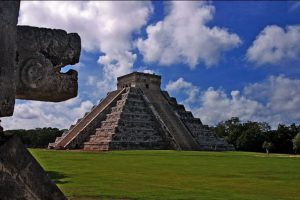 Плеяды были священным созвездием у древних майя. На это созвездие чётко ориентирована всемирно известная пирамида Пернатого Змея в
Плеяды были священным созвездием у древних майя. На это созвездие чётко ориентирована всемирно известная пирамида Пернатого Змея в 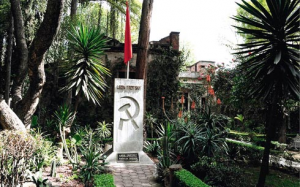 Паленке
Паленке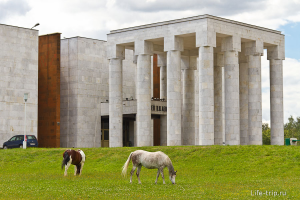
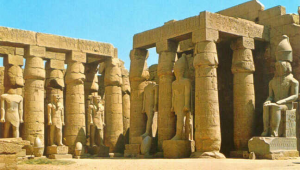 древний индийский город в штате
древний индийский город в штате 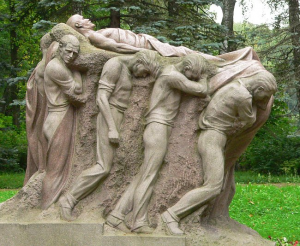
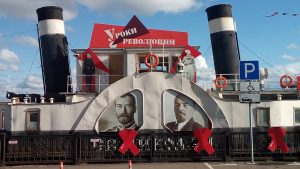
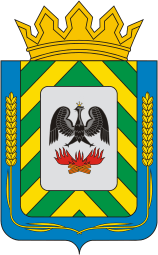
 Молокова — одного из первых героев Советского Союза. Лазурная оконечность символизирует реки
Молокова — одного из первых героев Советского Союза. Лазурная оконечность символизирует реки 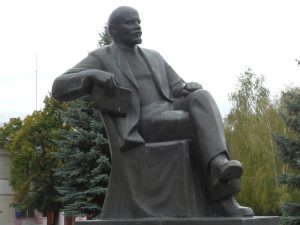 До 2012 года в состав Ленинского района входил «Мосрентген» — бывшее село и усадьба «Троицкое», в котором прошли детские и юношеские годы известного русского поэта Фёдора
До 2012 года в состав Ленинского района входил «Мосрентген» — бывшее село и усадьба «Троицкое», в котором прошли детские и юношеские годы известного русского поэта Фёдора  По мнению ученых-орнитологов, гордой двуглавой птицей, украшающей российский герб, является императорский или солнечный орёл. Он пришёл к византийцам от
По мнению ученых-орнитологов, гордой двуглавой птицей, украшающей российский герб, является императорский или солнечный орёл. Он пришёл к византийцам от 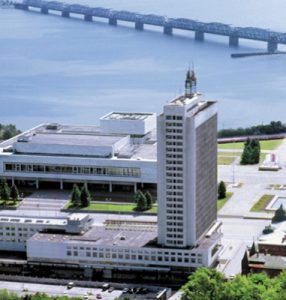 В Ульяновске, в 1970 году, к 100-летнему юбилею В.И. Ленина, на месте его рождения, был открыт огромный мемориал. До сих пор это один из крупнейших просветительских центров в России. Сооружение имеет форму квадрата со стороной 110 метров. В 1989 году, к 200-летию Французской революции, в Париже, в самом конце его исторической оси, была открыта Большая арка братства известная под именем Большая арка Дефанс. Дефанс считается самым большим деловым центром Европы, его также называют парижским
В Ульяновске, в 1970 году, к 100-летнему юбилею В.И. Ленина, на месте его рождения, был открыт огромный мемориал. До сих пор это один из крупнейших просветительских центров в России. Сооружение имеет форму квадрата со стороной 110 метров. В 1989 году, к 200-летию Французской революции, в Париже, в самом конце его исторической оси, была открыта Большая арка братства известная под именем Большая арка Дефанс. Дефанс считается самым большим деловым центром Европы, его также называют парижским 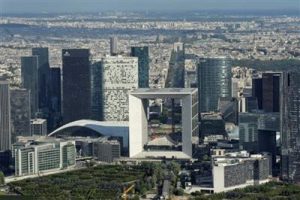 В книге «Власть талисмана: Тайны посвященных: от египетских жрецов до виновников трагедии
В книге «Власть талисмана: Тайны посвященных: от египетских жрецов до виновников трагедии  Составной частью вышеуказанного архитектурного ансамбля Ленинского мемориала в Ульяновске стала высотная гостиница «Венец». С одной стороны, венец – это высшая точка. Не случайно, в православных храмах, иконы, служащие диаконскими дверьми, изображают диакона Стефана и архидиакона Лаврентия. В переводе с греческого, значение имени Стефан – «венец», «корона». Имя Лаврентий происходит от названия лаврового дерева, символизирующего со времён античности победу и славу (лавровый венец).
Составной частью вышеуказанного архитектурного ансамбля Ленинского мемориала в Ульяновске стала высотная гостиница «Венец». С одной стороны, венец – это высшая точка. Не случайно, в православных храмах, иконы, служащие диаконскими дверьми, изображают диакона Стефана и архидиакона Лаврентия. В переводе с греческого, значение имени Стефан – «венец», «корона». Имя Лаврентий происходит от названия лаврового дерева, символизирующего со времён античности победу и славу (лавровый венец). На территории Ульяновска берёт начало река Симбирка и в нём же она впадает в Свиягу, чей исток находится в 100 км. к юго-западу от Ульяновска / Симбирска. Ещё 50 км. до истока вышеуказанной Суры. Сура впадает в Волгу в районе Васильсурска, а Свияга – в районе
На территории Ульяновска берёт начало река Симбирка и в нём же она впадает в Свиягу, чей исток находится в 100 км. к юго-западу от Ульяновска / Симбирска. Ещё 50 км. до истока вышеуказанной Суры. Сура впадает в Волгу в районе Васильсурска, а Свияга – в районе  Николай — имя настоящего Ленина из Ярославской губернии, чья фамилия стала псевдонимом Владимира Ульянова (см. раздел I). Никольская гора (ранее известная под именем Белой) – одно из самых почитаемых сакральных мест Ульяновской области. По преданию, в правление
Николай — имя настоящего Ленина из Ярославской губернии, чья фамилия стала псевдонимом Владимира Ульянова (см. раздел I). Никольская гора (ранее известная под именем Белой) – одно из самых почитаемых сакральных мест Ульяновской области. По преданию, в правление 